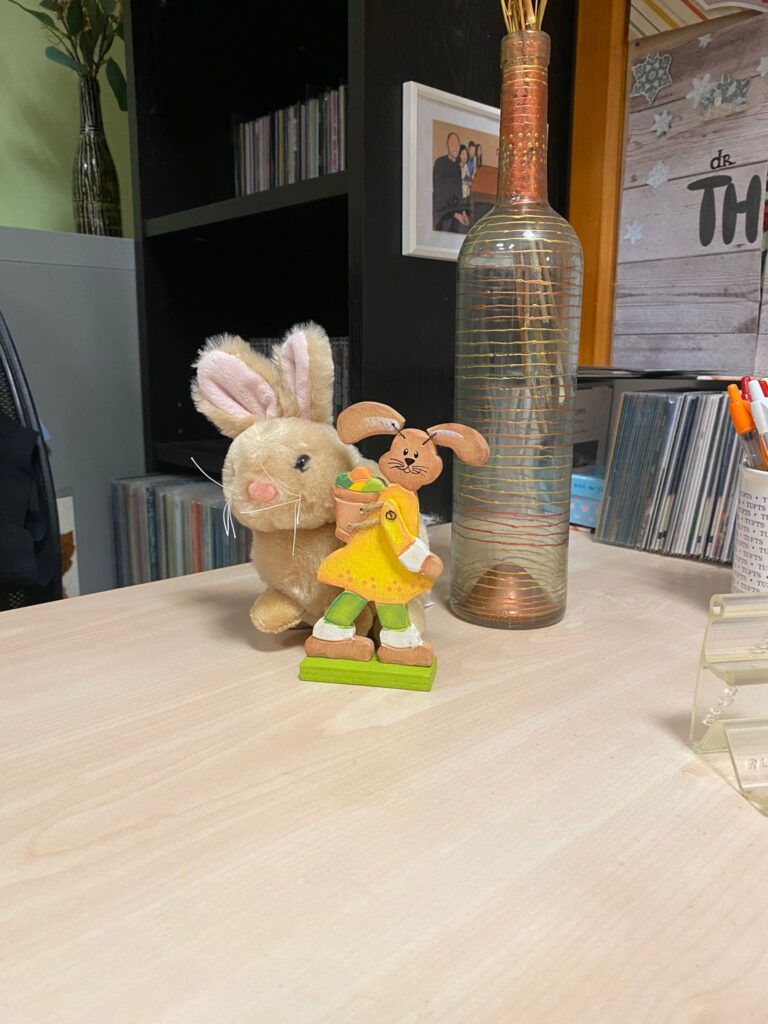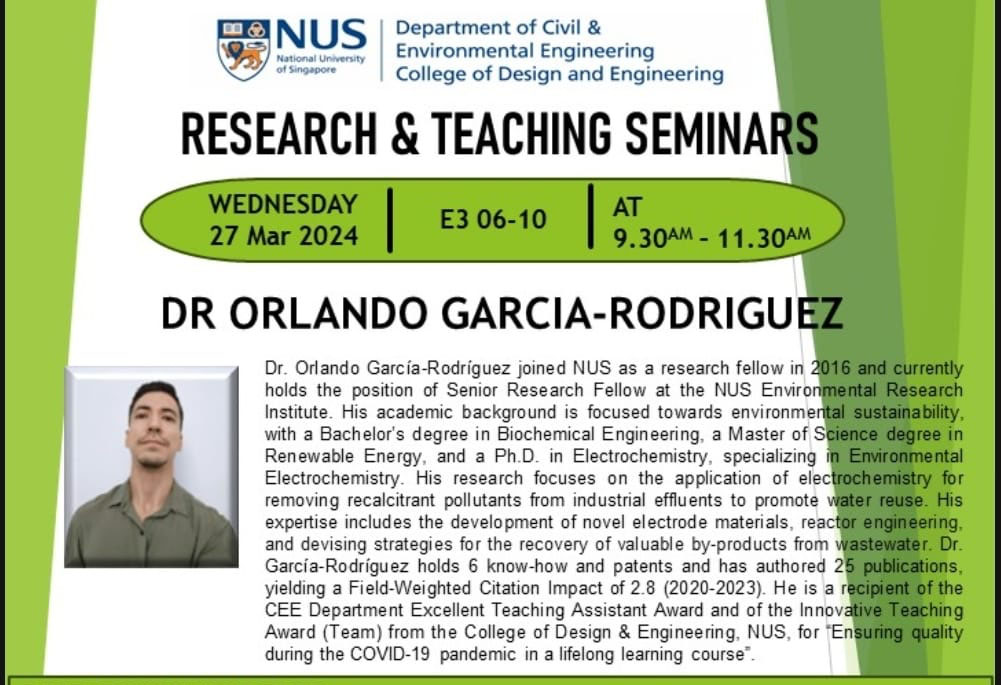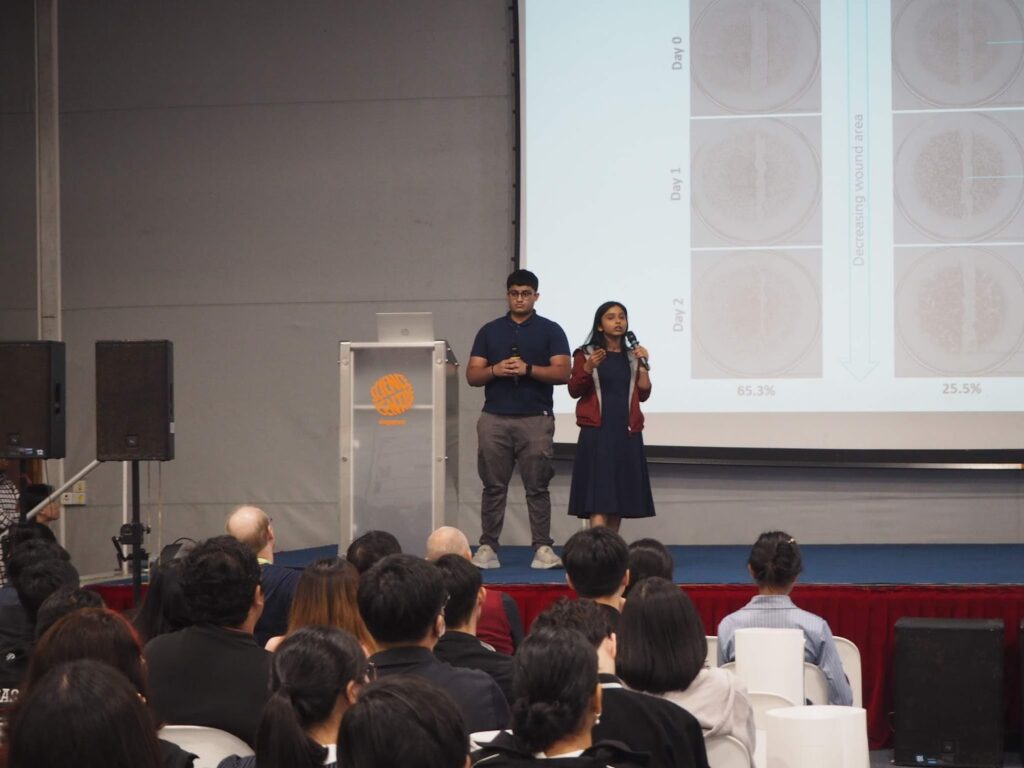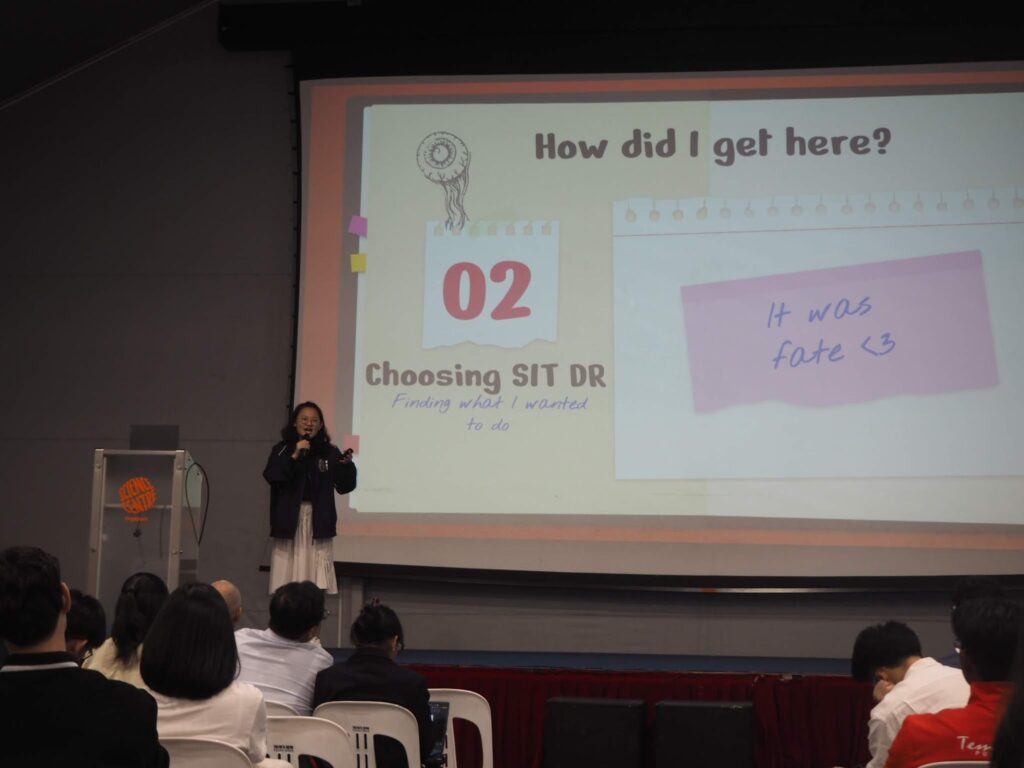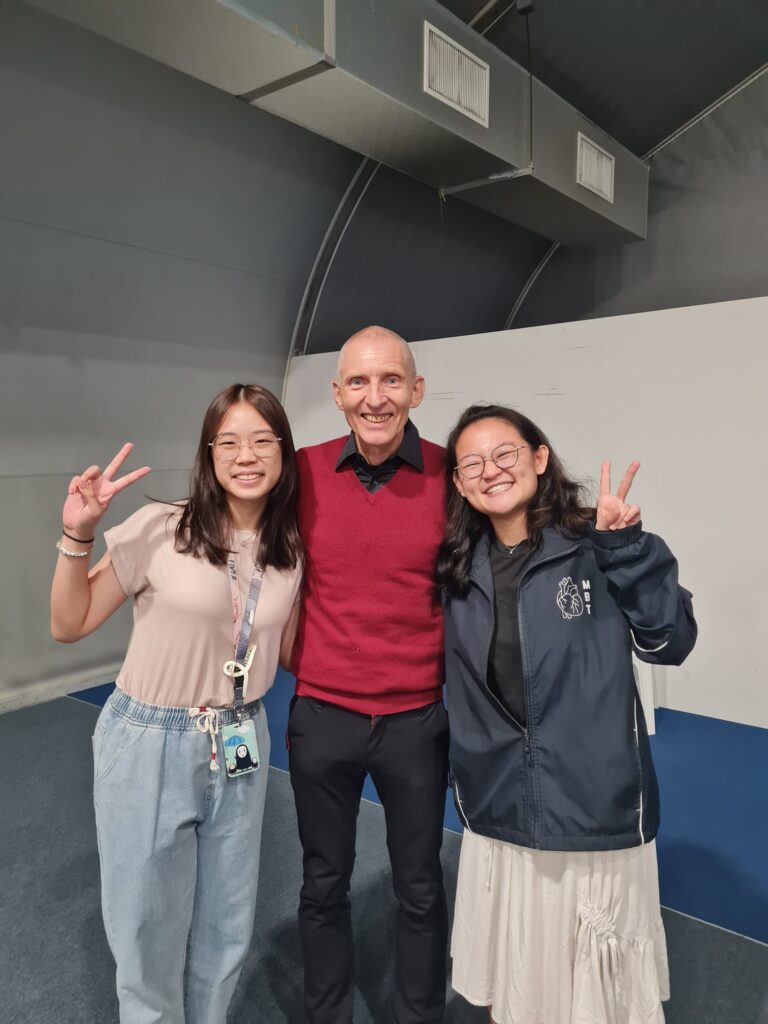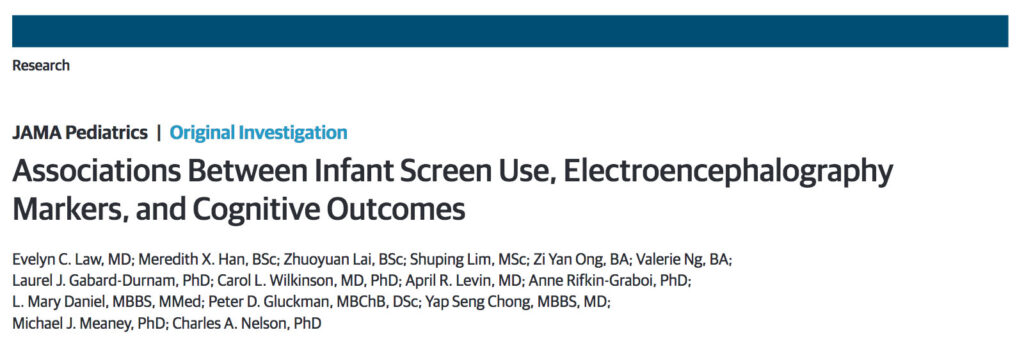WEEKLY HIGHLIGHTS 2024 FIRST HALF
HIGHLIGHTS FOR WEEK OF 3 – 9 JUNE
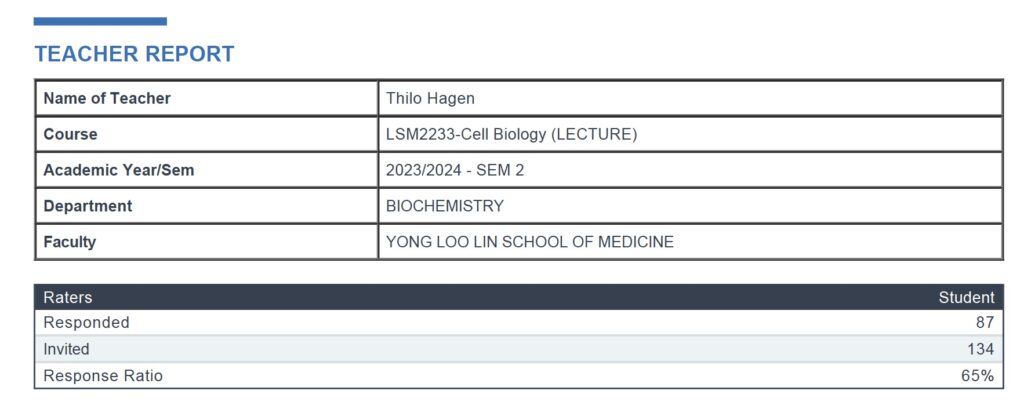
Semester teaching feedback
The time for my formal teaching feedback for the past semester has come again.
Firstly, all scores have slightly improved compared the previous year.
And secondly, there were some amazing comments that made me extremely happy (although I am not going to cite any here)!
But to gain a complete picture it is of course best to look at the common positive comments as well as the suggestions for improvement. In terms of constructive feedback, the comments focus mainly on three points:
-the high degree of difficulty of the course, in particular of the quizzes and tests (30 comments)
-the lack of coherent structure (16 comments)
-the absence of details in my lecture slides (17 comments)
These comments are recurring every year because the difficulty, the lack of structure and the absence of details in my lecture slides are all intentional, in part to motivate students, to engage them and to get them to take responsibility for their own learning.
As I do in every semester, I explained the rationales behind these strategies at the beginning of the course. And as also in every semester, discussing these rationales does not make much difference to the feedback comments.
Notably, some students recognized why I am using these approaches. For instance, with regards to the difficulty level of the problems we discussed, some of the comments were:
“Challenging which makes it more interesting”
“constantly challenging students’ abilities, making the module interesting and meaningful as I was able to learn a lot”
“was very challenging and made me think critically”
In fact, there were 14 comments highlighting that having to solve difficult problems was a good thing.
I was also happy about the following comment, in which the student recognized that the common approach of covering content in a systematic manner tends to disengage students:
“The narrative structure (where the topic segregations are not extremely clear) of the course maintained engagement for students.”
What about the positive comments? Apart from highlighting the need for critical thinking, there were three other main points that the students appreciated:
-the emphasis on applying learned knowledge (19 comments)
-the engaging lectures and effective learning through in-class student peer discussions using the Learning Catalytics platform (15 comments)
-my efforts to learn the student names and get to know the students (8 comments)
These comments are an enouraging validation of my main teaching approaches. Notably, there were only few comments on workload, in which students described the amount of work as either low, manageable or too high, which overall suggests to me that the workload was not a major issue.
So overall, I am happy. The conclusion seems to be that next year I should be doing more of the same – dedicating even more, or in fact all class time to application and peer activities and restrict formal teaching to pre-class videos. This is indeed what I have been planning to do.
HIGHLIGHTS FOR WEEK OF 27 MAY – 2 JUNE

My first days in Madrid
This week I arrived in Madrid, where I will be spending my semester break, working at the Centro de Biología Molecular Severo Ochoa with my collaborator, Dr. Susana Cadenas. So far, there have been only good things.
The research institute is amazing, in terms of the equipment and how well everything is organized, including administrative matters. The people are all very helpful and friendly and there is a solution for everything. I especially like that the priority in everything is to get the work done.
The weather has also been great. There have been blue skies almost the entire time since I arrived, although it did feel rather cold in the morning on some of the days.
And on Sunday I went for an amazing ballet performance, La Bayadera at Teatro Real Madrid, thanks to my host who bought the tickets. It was the most amazing ballet I have ever watched. The music score by Ludwig Minkus was wonderful and the dancing and choreographies were so beautiful. I will definitely remember this ballet and I hope to be able to see it again some time in the future!

HIGHLIGHTS FOR WEEK OF 20 – 26 MAY
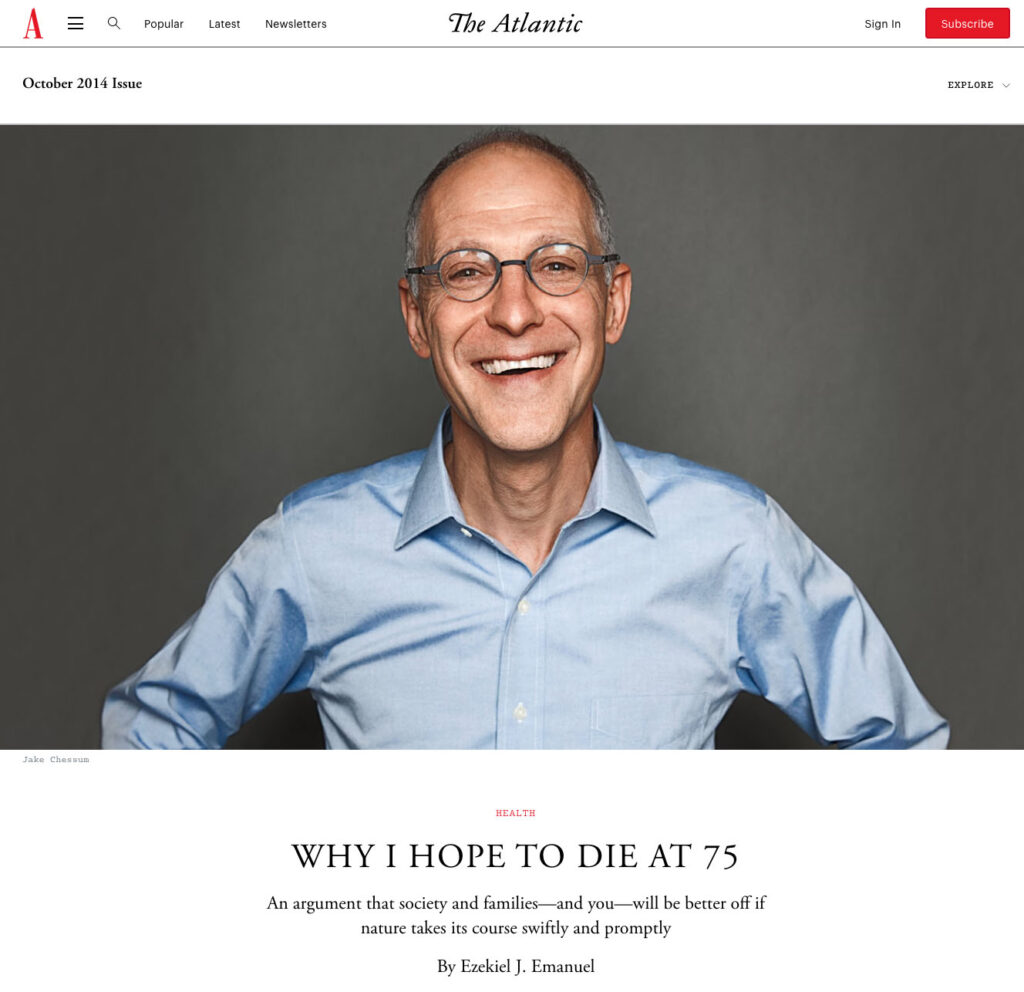
-the engaging lectures and effective learning through in-class student peer discussions using the Learning Catalytics platform (15 comments)
-my efforts to learn the student names and get to know the students (8 comments)
These comments are an enouraging validation of my main teaching approaches. Notably, there were only few comments on workload, in which students described the amount of work as either low, manageable or too high, which overall suggests to me that the workload was not a major issue.
So overall, I am happy. The conclusion seems to be that next year I should be doing more of the same – dedicating even more, or in fact all class time to application and peer activities and restrict formal teaching to pre-class videos. This is indeed what I have been planning to do.
HIGHLIGHTS FOR WEEK OF 27 MAY – 2 JUNE

My first days in Madrid
This week I arrived in Madrid, where I will be spending my semester break, working at the Centro de Biología Molecular Severo Ochoa with my collaborator, Dr. Susana Cadenas. So far, there have been only good things.
The research institute is amazing, in terms of the equipment and how well everything is organized, including administrative matters. The people are all very helpful and friendly and there is a solution for everything. I especially like that the priority in everything is to get the work done.
The weather has also been great. There have been blue skies almost the entire time since I arrived, although it did feel rather cold in the morning on some of the days.
And on Sunday I went for an amazing ballet performance, La Bayadera at Teatro Real Madrid, thanks to my host who bought the tickets. It was the most amazing ballet I have ever watched. The music score by Ludwig Minkus was wonderful and the dancing and choreographies were so beautiful. I will definitely remember this ballet and I hope to be able to see it again some time in the future!

HIGHLIGHTS FOR WEEK OF 20 – 26 MAY

Why do we want more?
One thing that is constantly on my mind is that I still want to do many things and that time is running out. This does not come from feeling that there have been things missing in my life. In fact, I view my life with great satisfaction and looking back at my life fills me with genuine happiness.
Then, where does the urge to still want to do many things come from?
Do I feel that I have not achieved enough and have not made enough impact so far?
The answer to this question is NO. While I do want to make more impact, this is not because I have not had enough impact so far. It is for the same reason why all along I wanted to make an impact. It is because making an impact is part of the meaning of our lives.
Is the reason that I do not want to be considered as old and not needed anymore?
If I am honest, the answer to this question is probably YES. I hate to think or admit that my age is preventing me from doing certain things. I hate it when my age comes up or is implied in any conversations. Hence, perhaps it is time to just accept this fact.
While cleaning up my bookmarks, I was re-reading a blog post called “Why I hope to die at 75”. One thing struck me. The author wrote that after the age of 75, very few people are still productive. Many people are still very active, but few do things that are meaningful towards others or to our society.
Of course, there are exceptions, such as politicians or one of my role models, high school running coach Joe Newton, who in his 80s still coached and inspired young runners. But they are clearly exceptions.
So perhaps it is time to change my mindset. It is good if I still can do meaningful things. But it is not a must. I will continue to try to improve and offer what I can do to help others and contribute to our society. But it is not something that I have to achieve. There are many ways in which I can enjoy my life without validating myself that I am still needed.
Finally, perhaps it is also time to accept my age as a factor that affects my ability to make meaningful contributions. I could even go one step further and adopt a mindset where I feel that my age is something that liberates me from the need to prove myself. That is of course not to say that I would not continue to try to keep my body fit and healthy and take up challenging tasks. But the purpose should not be to prove to me and to others that I am still young, but to be a happier person.

The answer to this question is NO. While I do want to make more impact, this is not because I have not had enough impact so far. It is for the same reason why all along I wanted to make an impact. It is because making an impact is part of the meaning of our lives.
Is the reason that I do not want to be considered as old and not needed anymore?
If I am honest, the answer to this question is probably YES. I hate to think or admit that my age is preventing me from doing certain things. I hate it when my age comes up or is implied in any conversations. Hence, perhaps it is time to just accept this fact.
While cleaning up my bookmarks, I was re-reading a blog post called “Why I hope to die at 75”. One thing struck me. The author wrote that after the age of 75, very few people are still productive. Many people are still very active, but few do things that are meaningful towards others or to our society.
Of course, there are exceptions, such as politicians or one of my role models, high school running coach Joe Newton, who in his 80s still coached and inspired young runners. But they are clearly exceptions.
So perhaps it is time to change my mindset. It is good if I still can do meaningful things. But it is not a must. I will continue to try to improve and offer what I can do to help others and contribute to our society. But it is not something that I have to achieve. There are many ways in which I can enjoy my life without validating myself that I am still needed.
Finally, perhaps it is also time to accept my age as a factor that affects my ability to make meaningful contributions. I could even go one step further and adopt a mindset where I feel that my age is something that liberates me from the need to prove myself. That is of course not to say that I would not continue to try to keep my body fit and healthy and take up challenging tasks. But the purpose should not be to prove to me and to others that I am still young, but to be a happier person.

Another impactful insight: How to get rid of debilitating habits?
This week’s Vesak day was very impactful for me. Not only because I gained a new and immensely liberating perspective on my age, but also because I finally found an amazing approach to address, or more precisely eliminate my remaining unwanted habits.
Over the past years I have changed a lot of my habits. For instance, I exercise on most days and I have eliminated numerous things from my diet completely. This includes not only meat and fish, but also sugary drinks, chocolate, sweet snacks, cake and soft bread. Most recently I have stopped buying clothes except when I need any. I have also stopped going to record stores.
One thing that these things have in common is that I know for certain that I will never break these habits or re-start any undesired habits again. This is because I have already adopted a mindset that my decision is final. In addition, I have seen the benefits of the implemented changes for my mental and physical health, which is a powerful incentive to not destroy what I have achieved for myself.
When on Vesak day I read about the AVRT (Addictive Voice Recognition Technique) method of kicking habits and addictions, I realized that the confidence to never do something again is the most critical factor in changing ourselves. According to the AVRT method, all we have to do is to decide for ourselves that we are going to stop something for good and never do it again. As a result, our mind would not consider the possibility of overstepping this boundary.
The key concept of the AVRT technique is that we are perfectly able to kick any habit or addiction, whether it is drinking, taking drugs or in my case for instance the compulsion to buy records and constantly check out and download new music.
Although AVRT acknowledges the importance of the dopamine reward reinforcement that drives addictive behavior, AVRT suggests that the main culprit is the presence of a second personality in our mind. This second personality could for instance be referred to as the pleasure monster in our head. Importantly, this monster disguises itself as ourselves and expresses his needs through ourselves.
I find that this concept is remarkably effective in eliminating habits we do not want to experience in our lives. Thus, when certain desires arise in ourselves, the concept helps us to recognize that these are actually not our own desires. The desires call for an instantaneous satisfaction of our pleasure seeking non-self with the effect of destroying our real self.
What I also like about the method is that by recognizing and silencing the pleasure monster and making the commitment to stop doing something for good, we can consider ourselves cured from any unwanted habit or addiction because we have already eliminated the possibility of relapse.
I realized that this is precisely what has happened to me in the past when I made the decision to stop doing certain things. By making a conscious decision and being determined, I eliminated the possibility that I will ever do again what I sought to stop doing. As a result, I have forever silenced any objections from the pleasure seeking voice in my brain.
When I woke up the next day after deciding to stop searching and buying for records and checking any new music online (which for me triggers an endless cycle of buying stuff and spending tons of time), I felt liberated. I did not feel compelled to continue to satisfy this habit and follow my morning routine of checking the website I normally visit on this day of the week.
As discussed at the beginning, this liberating experience is an important factor to enforce a new habit.
I have since added some other habits that I waste time with and that do not really contribute to how I want to spend my life. These include stopping to watch youtube videos and any movies on my laptop. I even used the method to stop being annoyed by other people being inconsiderate by telling myself that it is not me who is being annoyed, but my non-self monster who wants to be right about other people being selfish. I can eliminate this habit, which has had a great cost on my happiness and productivity, by simply deciding that I am not going to care anymore because the noise does not affect my concentration.
What a (Vesak) day! (Of course, fittingly Vesak day is a Buddhist holiday, and as such the perfect day to give up beliefs and habits.)
Note besides: The AVRT method can be readily googled, revealing a relevant youtube link (which I am not including for reasons discussed above) and a pdf version of the book.
The physical and digital music I have is likely to satisfy my needs for the remainder of my lifetime.

HIGHLIGHTS FOR WEEK OF 13 – 19 MAY
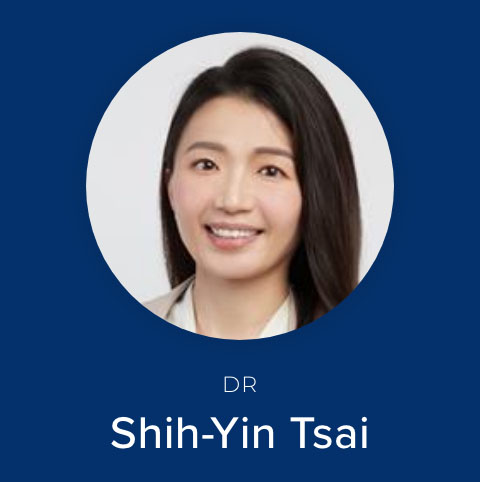

HIGHLIGHTS FOR WEEK OF 13 – 19 MAY

Authentic Learning through a research talk
Last week I discussed about the importance of incorporating authentic learning elements into our teaching. One approach through which I tried to introduce an authentic learning element during the past semester in my Cell Biology course is through a research talk.
Why?
Well, at the beginning of each semester I always tell the students that the main goal of my teaching is to enable them to understand scientific research through comprehending research data. As such, it would be a good idea to let the students experience real scientific research. What better way is there than letting students experience a real research talk.
For some reason, however, this is rarely done. Even when course instructors invite guest lecturers to talk about their research area of expertise, the researchers usually deliver lectures summarizing what is known in their field. By doing so, they normally intentionally leave out the research part to ensure that the students are able to understand their lecture.
And so when I approached the researcher who I hoped would give a research talk in my course, Assistant Professor Tsai Shih-Yin from the Department of Physiology at NUS, her initial plan was to take a similar approach and summarize or “teach” the students her research findings.
However, after some discussion she included her hypothesis, research design and actual experiments. In the end, she delivered an amazing lecture – that is an amazing research talk! The students all paid close attention and clearly enjoyed the session, as testified by this student comment:
“Thanks Dr Tsai. We were intrigued by many parts of the talk.”
For this research talk component, there were three main goals that I wanted to achieve:
Firstly, I wanted to get the students to see that research is exciting, which requires that we describe the process in detail, as is usually done in a research talk.
I also wanted to show the students that what they are learning is relevant to solving real live and current problems.
Finally, I wanted to get the students to talk about and discuss the research with their group mates.
To achieve these outcomes, and most importantly promote that students were motivated to pay attention, I included some group activities after the talk, which were graded with a low number of marks.
In these activities, I purposely did not ask the students to discuss implications of the research or future directions because I wanted the students to focus on and appreciate the research itself. To achieve this, I asked the student groups to come up with joint answers to the following questions:
-What was one experiment that you feel was very important? Explain why?
-What was one hypothesis that was tested and what were the approach(es) used to test the hypothesis?
-Which point did you not understand, even after discussion with your group mates, or only understood after group discussion?
-Indicate two things that surprised you about the talk (which could be anything).
-Write a lay summary of how you would explain the talk to your parents (for which I also gave some concrete recommendations about the structure).
Based on my observations, these questions seemed very suitable to elicit discussions within the student groups. The submitted answers and lay summaries revealed that these discussions helped the students gain more insights about the presented research.
I was particularly happy that a couple of student groups, when prompted about what surprised them about the talk, pointed out that “We were surprised how applicable the pathways and proteins we are learning in lectures in LSM2233 are to current research.”
Thank you Shih-Yin for making this possible!
HIGHLIGHTS FOR WEEK OF 6 – 12 MAY

I was particularly happy that a couple of student groups, when prompted about what surprised them about the talk, pointed out that “We were surprised how applicable the pathways and proteins we are learning in lectures in LSM2233 are to current research.”
Thank you Shih-Yin for making this possible!
HIGHLIGHTS FOR WEEK OF 6 – 12 MAY

A Workshop about Authentic Learning (By Kuan Yee Han & Kiruthika Ragupathi)
Some weeks ago I attended a workshop in which two NUS professors shared tips and experiences of implementing authentic learning in their course, a small class module about human ageing. It took the end of the semester to finally have time to process and reflect on what I had gained from this workshop.
Authentic learning involves reflecting on, discussing and solving real-world problems in our classes or assignments and conducting projects that are relevant to the learner. In its most advanced form, authentic learning gets students to create useful products that can be shared with our society.
There are two important questions that came up for me during the workshop. Firstly, what are the difficulties and roadblocks in implementing an authentic learning approach. Secondly, how can I implement more authentic learning in my own teaching.
Authentic learning requires not only to expose students to relevant problems and letting them engage with these problems, it also requires reflections. Without reflections students can pick up some practical skills. But they are less likely to experience shifts in their approach and way of thinking to help them to solve other tasks they will encounter.
If reflecting is an essential part of authentic learning, it follows that we need to provide opportunities and incentives for students to take the time to reflect. In the workshop the facilitators discussed some approaches, for instance letting students keep a journal of reflections and learning points. To motivate students to write these reflections, the final assignment of the course is also a reflection. As such, the regular reflections throughout the semester will help the students in preparing the final assignment.
Another useful approach highlighted in the workshop is to let students openly reflect at the beginning of each class.
This approach reminded me of the coaching courses I have attended, in which the facilitators at the beginning of each day let us reflect on things that have came up for us from the previous day. Initially most course participants were shy and reluctant to speak up. But with repeated occurrence of this practice we learned to use this opportunity to think about what we have learned and to express our thoughts.
I believe that the lack of reflection is the greatest loss that we have experienced as a result of recent technological advances. Reflecting simply means spending time with our thoughts. The constant distractions offered by technology and social media prevent us from having this time and even realizing that we are lacking this time, leading us to waste yet more time.
Hence, it is not surprising that students in my course often thank me for being “forced” to sit down and reflect. I believe by providing (or demanding) more opportunities for reflection, we let students see their own progression and allow them to reflect on their own past reflections or the implications of these reflections.
This of course brings up a major difficulty. To incentivize students to reflect, it is important to read or in my case watch the student reflections. Depending on the class size, this can require a lot of time, especially when we want to provide some feedback comments to acknowledge the student effort and potentially offer some advice. Asking students for more reflections could hence further increase the workload on my part.
Here the two described approaches, i.e. firstly getting students to continuously reflect on their own in preparation for a final submission in which they specifically discuss their progression, and secondly reflecting at the beginning of a class, could indeed be very helpful. With regards to the latter approach, a large class size could be considered prohibitive. But it is still possible to provide time to let students reflect within groups or with their neighbours.
A second difficulty in implementing authentic learning is that students tend to focus on delivering what the lecturer wants to hear. If they do not know what the instructor expects, they often feel stressed and revert to coming up with the “safest” option. This of course impedes authentic learning.
One useful approach to address this concern recommended in the workshop is providing examples of what a good assignment could look like. For instance, the workshop facilitator shared that when he wants students to question current thinking, he would himself highlight his own doubts so that students realize it is okay and even expected to be critical and constructive.
Having attended the workshop, what changes am I planning to implement in my own teaching?
To make my teaching more authentic, I plan to incorporate the use of generative AI tools more into my teaching. I also would like to take a more individualized approach, especially in my postgraduate course, by using reflections in which students identify their own weaknesses and goals and chart their journey to improvement. How exactly I want to achieve these goals is something that I still need to think about and will be discussing in another post.
HIGHLIGHTS FOR WEEK OF 29 APRIL – 5 MAY

We finally had our paper on structural investigations of uncoupler compounds published in FEBS Open Bio!

HIGHLIGHTS FOR WEEK OF 22 – 28 APRIL
HIGHLIGHTS FOR WEEK OF 29 APRIL – 5 MAY

We finally had our paper on structural investigations of uncoupler compounds published in FEBS Open Bio!

HIGHLIGHTS FOR WEEK OF 22 – 28 APRIL
A few weeks ago I discussed how generative AI tools are able to provide emotional support in ways that are in fact better than support provided by humans. What is more, generative AI tools are likely to become even more advanced in the future in ways that we probably cannot imagine today. As a result, they may help to solve complex problems that we and our society struggle with.
It is likely that humans will depend on these tools more and more. As a consequence, humans may lose many skills and lack incentives to acquire them. This of course raises important questions in the area of education. Should we still teach students skills that can be effectively accomplished by generative AI tools? Do we accept the fact that students will be using these tools in their future and hence incorporate them into our teaching?
The emergence of generative AI tools also has important practical implications on the way we assess students. For instance, when giving assay or video assignments, we have to be prepared that students will use text editing or video making AI tools. If we conduct exams with open internet as I do, we have to consider that students will use generative AI tools to solve the assigned problems.
Hence, I would like to discuss here how I have adopted my teaching and assessment specifically to the emergence of ChatGPT and other ChatBots.
In terms of the teaching itself, generative AI tools naturally obviate the delivery of pure factual information even more. In my opinion, the only justification to provide students with factual information in this day and age is to use and apply factual knowledge to solve problems through application based practice exercises.
Furthermore, given that students will be using generative AI tools in their future, I believe that in order to teach authentically and truly prepare students for their future, we should be incorporating these tools into our teaching and even assessments (see below).
Any attempts to prevent students from using AI tools are technically challenging as it is difficult to detect their usage. What is more, it is likely to become even more challenging in the future. In addition, preventing students from using generative AI tools is likely to meet with student resistance because this prohibitive approach does not reflect the reality in which today’s students exist and operate.
Hence, given these considerations I decided to experiment with using ChatBots in my teaching this past semester. One emphasis in my course is for students to learn how we test a scientific hypothesis. This is important not only because it is an important skill that a scientist needs to have, but also because it is a skill that helps students to evaluate scientific information or claims they encounter in their work or personal lives.
In the past, I used to teach students the type of experiments that are critical in testing a hypothesis. I then conducted practice exercises in which students had to propose approaches and experiments to test specific hypotheses, which sometimes they had to come up by themselves.
This year I first assessed how good ChatGPT is at proposing experiments to test a specific hypothesis. Initially I was amazed about what ChatGPT could do. Nonetheless, upon greater scrutiny it became clear that not all proposed experiments were ideal and some suggestions did not help to address the hypothesis at all. As such, the obvious activity became to let students evaluate experiments proposed by ChatGPT to test a hypothesis that was provided by me or that the students had to come up with by themselves as a group.
This approach turned out to be rather effective. An alternative approach that I may try in the future is to let students first come up with their own approaches and then compare their suggestions with those of the ChatBot.
Another often recommended student activity is to let students figure out the most suitable design of question prompts to ask the ChatBot. Based on my limited experience I found, however, that varying the prompt did not result in a huge change in the type of response that ChatGPT produced.
As always, it is important to provide incentives in order for students to take these activities seriously. The best approaches are to assign low marks or marks for participation and to include similar activities in the formal assessments, such as the mid-term and final exam, and ensure that the students are aware of this.
This then brings me to the implications of generative AI tools on formal student assessment. For instance, based on the described activities, if our assessment allows for open internet, we could include a similar task in the exam. If not, we can provide to students answers given by ChatBots and let them evaluate these answers.
However, when it comes to assessments, the main concern of many lecturers is that students will retrieve knowledge, improve assignments or solve problems using generative AI tools.
With regards to the first concern (retrieving knowledge), the simple answer is that we clearly should not be assessing pure knowledge.
With regards to using AI tools for improve assignments, we can either choose different forms of assessments where generative AI tools are likely to be less helpful (e.g. oral presentations, teach your peers assignments or debates), or we can incorporate AI tools in meaningful ways. In my undergraduate course, I do not have assignments, mainly in order to not incur excessive workload onto students. But a number of potential approaches to incorporate generative AI tools into assignments come to mind.
Firstly, we can simply require the use of AI tools for certain parts of an assignment.
Alternatively, we can ask students to submit two versions, one with and another without use of AI tools. In order to eliminate the motivation of students to “cheat” we could promise to only award grades for whichever is the better version. In class, we can also let the other students evaluate which assignment versions were prepared using AI and which were not as well as which is the better version and why.
Finally, we can let students solve problems that cannot be solved using generative AI tools. This is indeed the approach I try to use in my formal assessments, i.e. my mid team and final exams.
When it comes to formal assessments, many lecturers revert to preventing students from using ChatBots (or even their notes). This is understandable. I have found that in the context of my course, ChatBots show a remarkable and highly relevant performance in answering many questions involving not only factual information, but also to solve problems.
Nonetheless, in my forms of assessment, where students need to evaluate and predict research data and research figures and read and understand in detail research papers, AI currently does not pose a threat. At the present time, interpreting and predicting specific research data is either impossible for AI tools or produces wrong answers.
Naturally, AI will get better, but it appears very unlikely that AI will become infallible in solving these tasks. Even if its performance improves with time, we can still revert to the approach of letting students evaluate ChatBot responses, which is a task that is authentic to real life situations.
Finally, one very useful way to use generative AI in teaching that I recently read about was proposed in a Nature article by Musthtaq Bilal. He suggested to take advantage of the recent launch by OpenAI of custom versions of ChatGPT that can be designed for specific courses.
For instance, one could create a custom ChatGPT for a course, by providing all the course information to the ChatBot and “asking it to always base its answers on the course materials provided”. By letting students use this course specific custom ChatGPT, we create an authentic learning experience using a ChatBot while at the same time preventing that students will find information for problems they are supposed to solve on their own.
Although this option sounds exciting, I discovered that using this ChatGPT feature requires a paid account (ChatGPT Plus) not only for the creator (i.e. the instructor), but also for the students. This makes this approach thus impractical, unless at some point institutions (i.e. Universities) subscribe to paid versions of ChatGPT that can be accessed by all students.
In conclusion, generative AI tools are not a threat to our education system. Instead, it is possible and advisable to look at generative AI tools as an opportunity to improve learning and make learning more authentic.
HIGHLIGHTS FOR WEEK OF 15 – 21 APRIL

My teaching review
This week was the last week of classes in this semester, and hence it is reflection time again. The main goal for my teaching this semester was to make learning fun. Have I succeeded?
My main strategy to make learning fun and exciting was to focus on student engagement through discussing (and letting students discuss) problems. It is hard to objectively tell whether this has worked without waiting for the official student feedback.
In conclusion, generative AI tools are not a threat to our education system. Instead, it is possible and advisable to look at generative AI tools as an opportunity to improve learning and make learning more authentic.
HIGHLIGHTS FOR WEEK OF 15 – 21 APRIL

My teaching review
This week was the last week of classes in this semester, and hence it is reflection time again. The main goal for my teaching this semester was to make learning fun. Have I succeeded?
My main strategy to make learning fun and exciting was to focus on student engagement through discussing (and letting students discuss) problems. It is hard to objectively tell whether this has worked without waiting for the official student feedback.
Nonetheless, when observing the students, it was apparent that when the students did discuss problems, they enjoyed doing so. Many students also expressed informally that they enjoyed these activities.
However, the main problem was that I was not consequent enough to implement my strategy of engaging students through problems in all classes.
A good example is my final lecture about the cell cycle. There were several experimental approaches and pathways left that I wanted the students to know, partly because they will need to know them for the final exam. In addition, the topic of the last few lectures was the cell cycle, and as such if I do not discuss the complete cycle, the topic is obviously incomplete.
Although explaining the basic principles went fine, I realized that it would have been better if I had included them in a pre-lecture video.
I in fact did ask the students to watch a 30 min pre-lecture video, but the video discussed cell cycle related experiments, based on which I then conducted some practice exercises during the class. However, it became clear to me that it would have made much more sense to include the basic principles and pathways in the pre-lecture video. Instead, during the lecture I could have shown video excerpts explaining the experiments, followed by performing practice exercises.
I am glad I have realized about the importance of systematically reserving class time for practice exercises.
When teaching my course next year, I believe that the best solution is to teach all relevant principles, concepts and pathways asynchronously, i.e. in the form of pre-lecture videos or readings, and utilize class time entirely to apply learned knowledge.
I have indeed observed time and time again that students enjoy solving problems and discussing them with class mates or group mates during class. What is more, in their formal and informal feedback, students rarely comment on interesting lecture content or engaging lecture deliveries. In contrast, they frequently express how much they appreciate to be able to apply learned knowledge by solving problems, and how much they enjoy these activities.
HIGHLIGHTS FOR WEEK OF 8 – 14 APRIL

This Saturday I finally embarked on one of my favorite runs (and walk inbetween) from Mountbatten MRT to Changi Point, passing through the beautiful Changi Bay Park Connector. In was a beautiful day and although it was tiring, I enjoyed this day, including ending with a swim at Changi Beach and relaxing for a while at Changi Village Hawker Centre. And one week later I did it again, this time on a weekday, which meant I was literally alone for most of my run/walk.

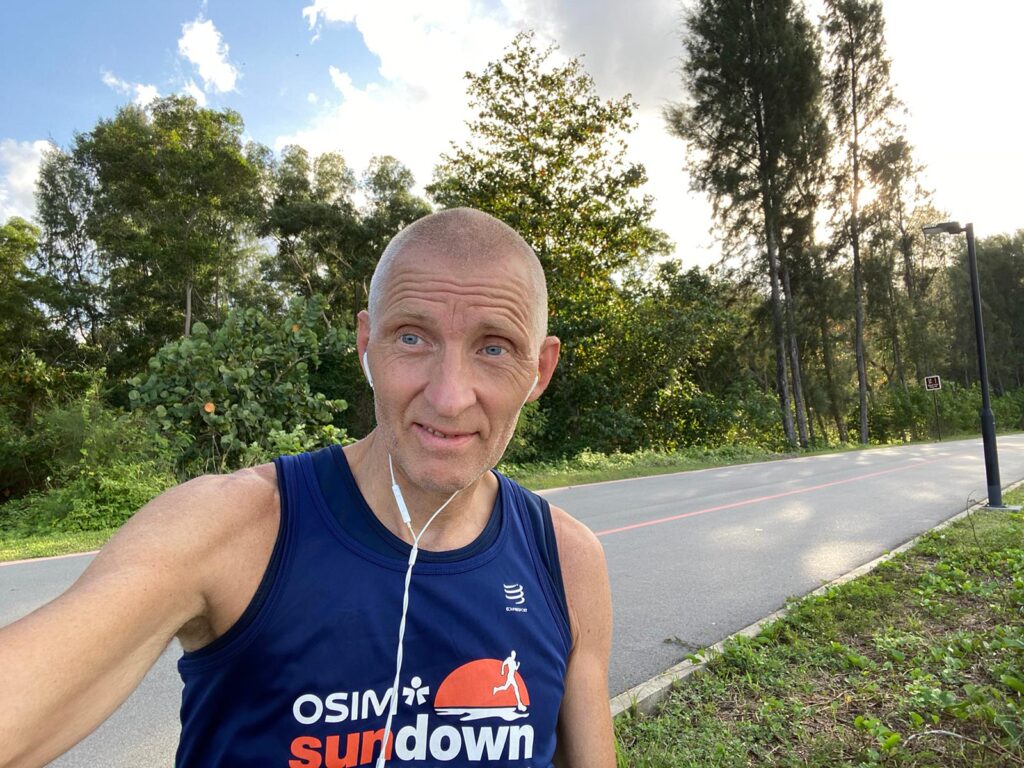
HIGHLIGHTS FOR WEEK OF 1 – 7 APRIL

These days everyone is talking about generative AI, in particular web tools such as OpenAI’s ChatGPT and Goggle’s Bard (now Gemini). However, as I have realized recently, these tools are only the tip of the iceberg.
There are also tools to generate images and photos as well as drawings and paintings (Dall-E2 and others), to produce videos (Lumen5), to design logos (Looka), to remove unwanted objects or persons from photographs (Cleanup.Pictures) or put old photographs into motion (Deep Nostalgia). Using Soundraw we can even “compose” music by simply selecting a musical genre, the instruments and the mood of a song, and then sit back and enjoy brand new music.
While all this sounds very exciting, it feels a bit scary at the same time. Not only do these tools make achieving our goals easier, they can also replace our creative work, obviating the need to become good at doing many things. They also have the potential to make us waste a lot of time and spend our days in ways that are not particularly meaningful.
While AI may to some extent replace our creative activities and the need to use our imagination, it can at the same time have a positive impact on our mental state by providing emotional support. What is more, when objectively measured, the emotional support that AI can deliver is even better compared that given by humans, including human experts, as I have learned from new research article by Yin et al. 2024 (AI can help people feel heard, but an AI label diminishes this impact), which was published in my favorite scientific journal PNAS (in which sadly I have never published myself).
AI ChatBots are very good at understanding human emotions and mental states because they can, as the authors point out, “process information about a person’s thoughts and feelings to a fuller extent” compared to a human. This may be because ChatBots have greater analytical abilities and abilities to process information. In addition, their view is not blurred by peoples’ own assumptions, assessments and judgements.
However, despite these inferiorities of human responses, most people prefer to be heard by humans, or are they? The new study by Yin et al. specifically addressed the question of whether human care about the source of help when they seek emotional support.
In other words, is it important (or perceived to be important) to interact with and being understood by other human beings who have their own experiences and views? Or alternatively, is it sufficient to have someone (or something) to acknowledge and validate our experience without drawing from their own experiences and views?
In most previously published research in which scientists compare emotional support provided by human responders versus generative AI tools such as ChatGPT, the researchers mask the source (AI or human responders) and measure the response of the study participants (the so-called response effect). The authors of the new study point out that this approach differs from real-world scenarios where the recipients know where a response comes from. Hence, they were interested in the “label effect”, in other words, does knowing the source of emotional support affect how humans respond to it.
To address this question, the researchers asked study participants to describe a complex situation that they were dealing with and the emotions they felt in the situation. The researchers then varied both the source of the response (either a human responder or a generative AI response – using Bing Chat in their study) as well as whether the response was labeled as human or AI generated.<
I have indeed observed time and time again that students enjoy solving problems and discussing them with class mates or group mates during class. What is more, in their formal and informal feedback, students rarely comment on interesting lecture content or engaging lecture deliveries. In contrast, they frequently express how much they appreciate to be able to apply learned knowledge by solving problems, and how much they enjoy these activities.
HIGHLIGHTS FOR WEEK OF 8 – 14 APRIL

This Saturday I finally embarked on one of my favorite runs (and walk inbetween) from Mountbatten MRT to Changi Point, passing through the beautiful Changi Bay Park Connector. In was a beautiful day and although it was tiring, I enjoyed this day, including ending with a swim at Changi Beach and relaxing for a while at Changi Village Hawker Centre. And one week later I did it again, this time on a weekday, which meant I was literally alone for most of my run/walk.


HIGHLIGHTS FOR WEEK OF 1 – 7 APRIL

These days everyone is talking about generative AI, in particular web tools such as OpenAI’s ChatGPT and Goggle’s Bard (now Gemini). However, as I have realized recently, these tools are only the tip of the iceberg.
There are also tools to generate images and photos as well as drawings and paintings (Dall-E2 and others), to produce videos (Lumen5), to design logos (Looka), to remove unwanted objects or persons from photographs (Cleanup.Pictures) or put old photographs into motion (Deep Nostalgia). Using Soundraw we can even “compose” music by simply selecting a musical genre, the instruments and the mood of a song, and then sit back and enjoy brand new music.
While all this sounds very exciting, it feels a bit scary at the same time. Not only do these tools make achieving our goals easier, they can also replace our creative work, obviating the need to become good at doing many things. They also have the potential to make us waste a lot of time and spend our days in ways that are not particularly meaningful.
While AI may to some extent replace our creative activities and the need to use our imagination, it can at the same time have a positive impact on our mental state by providing emotional support. What is more, when objectively measured, the emotional support that AI can deliver is even better compared that given by humans, including human experts, as I have learned from new research article by Yin et al. 2024 (AI can help people feel heard, but an AI label diminishes this impact), which was published in my favorite scientific journal PNAS (in which sadly I have never published myself).
AI ChatBots are very good at understanding human emotions and mental states because they can, as the authors point out, “process information about a person’s thoughts and feelings to a fuller extent” compared to a human. This may be because ChatBots have greater analytical abilities and abilities to process information. In addition, their view is not blurred by peoples’ own assumptions, assessments and judgements.
However, despite these inferiorities of human responses, most people prefer to be heard by humans, or are they? The new study by Yin et al. specifically addressed the question of whether human care about the source of help when they seek emotional support.
In other words, is it important (or perceived to be important) to interact with and being understood by other human beings who have their own experiences and views? Or alternatively, is it sufficient to have someone (or something) to acknowledge and validate our experience without drawing from their own experiences and views?
In most previously published research in which scientists compare emotional support provided by human responders versus generative AI tools such as ChatGPT, the researchers mask the source (AI or human responders) and measure the response of the study participants (the so-called response effect). The authors of the new study point out that this approach differs from real-world scenarios where the recipients know where a response comes from. Hence, they were interested in the “label effect”, in other words, does knowing the source of emotional support affect how humans respond to it.
To address this question, the researchers asked study participants to describe a complex situation that they were dealing with and the emotions they felt in the situation. The researchers then varied both the source of the response (either a human responder or a generative AI response – using Bing Chat in their study) as well as whether the response was labeled as human or AI generated.<
In other words, the study participants received messages generated by AI, with the information that it was either AI or human generated. Or they received support from human responders, again being labeled as generated by AI or humans.
The study participants then rated their perceptions about whether they felt heard, whether the response was accurate, whether the responder had understood them, and whether they felt connected to the responder on a scale from 1 to 7.
What were the findings?
Most notably, the authors found that “the condition that made people feel most heard and understood was when an AI-generated response was thought to be written by a human being.” On the other hand, responses given by humans but labeled as AI generated received the lowest ratings (see figure below). Thus the study provided clear evidence that an AI label has a negative effect on how emotional support messages are being perceived by humans seeking help.
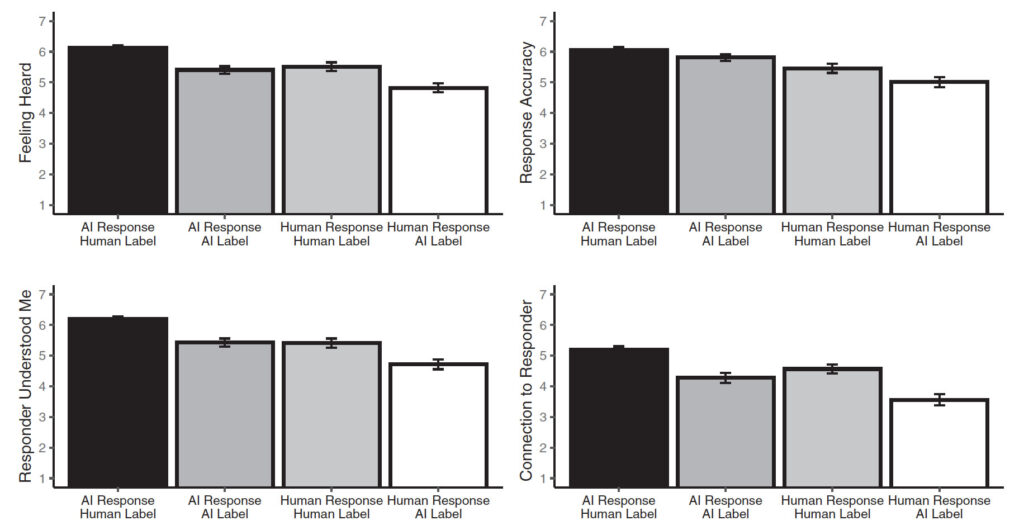 An AI label results in lower ratings of emotional support messages. Figure taken from Yin et al. (2024).
An AI label results in lower ratings of emotional support messages. Figure taken from Yin et al. (2024).
The study participants then rated their perceptions about whether they felt heard, whether the response was accurate, whether the responder had understood them, and whether they felt connected to the responder on a scale from 1 to 7.
What were the findings?
Most notably, the authors found that “the condition that made people feel most heard and understood was when an AI-generated response was thought to be written by a human being.” On the other hand, responses given by humans but labeled as AI generated received the lowest ratings (see figure below). Thus the study provided clear evidence that an AI label has a negative effect on how emotional support messages are being perceived by humans seeking help.
 An AI label results in lower ratings of emotional support messages. Figure taken from Yin et al. (2024).
An AI label results in lower ratings of emotional support messages. Figure taken from Yin et al. (2024).As the figure above shows, the research also reproduced previous findings that AI generated emotional support messages are generally rated higher compared to support messages provided by human respondents. Hence, the authors also conducted a follow-up study to find out why AI generated responses are perceived as more effective.
In this part of the study, the authors provided participants with responses without specifying whether they came from Bing Chat or humans. The researchers then measured the extent to which these responses provided emotional support or practical support. Notably, the authors found that “AI specifically provided emotional support … In contrast, human responders offered more practical support by sharing their own experiences and insights …”.
Based on this, the authors recommend that as we respond to others emotional distress, we are well-advised to hold back our urge to give advice but instead respond to their emotional needs by showing empathy and being supportive.
It should be noted that in the study by Yin et al. the human responders who provided support were anonymous strangers (who were also study participants). As mentioned above, prior studies have suggested that AI even outperforms human experts in providing emotional support. However, an important factor to consider when receiving support may be the connection felt towards friends and family. It stands to reason that the source of this emotional support, be it from strangers or our close friends or relatives, may affect our response greatly. In more general terms, the authors of the study suggest (and cite other studies to suggest) that the most meaningful comparison would be between AI generated support and an individual’s best available person to help (which may be a friend family member or a professional).
Finally, the authors conclude that since we prefer to be heard by other humans, we are well advised when providing emotional support to seek help and learn from generative AI tools on how to best respond to the emotional needs of others.
This week on Wednesday, after delivering my last class before the long Easter weekend, I felt like the quiet after the big storm. I have been rushing from preparing for one lecture to the next, coming up with questions, answers and explanations, planning classes, preparing videos, trying to mark papers and watch student video assignments. This is usually tough but manageable when all goes well. But when I plan all these things, I usually do not take into account things that not all things may go well. And some things did not go well. I got sick again and literally spent more days being unwell this year than being healthy. And I made another mistake when administering my team quiz yesterday, which upset me greatly because it affected student learning and created more work for me.
I know that I am not alone in feeling exhausted. The semester is also very challenging for students. If unexpected things happen (which most people do not plan for), such as students discovering that a course requires much more work than they had anticipated, or students falling ill, they struggle and suffer.
Hence, for the first time I really appreciated the Wellness day that the University has implemented this week on Thursday. Having a break for mental recovery and regaining energy is something that is essential. And so I feel very happy to have some time on my own over the next days to do things that I enjoy and care about, and to also be able to enjoy the things that I have to do.
What also made me happy this week was attending my friend’s teaching seminar, which is part of his application process for a lecturer position. His class was simply beautiful, and I felt happy because in Orlando I found someone who cares about the same things that I care about – getting the students to learn meaningful things and getting them to solve problems. Discovering that someone else shares our values and insights is always very exciting.
HIGHLIGHTS FOR WEEK OF 18 – 24 MARCH
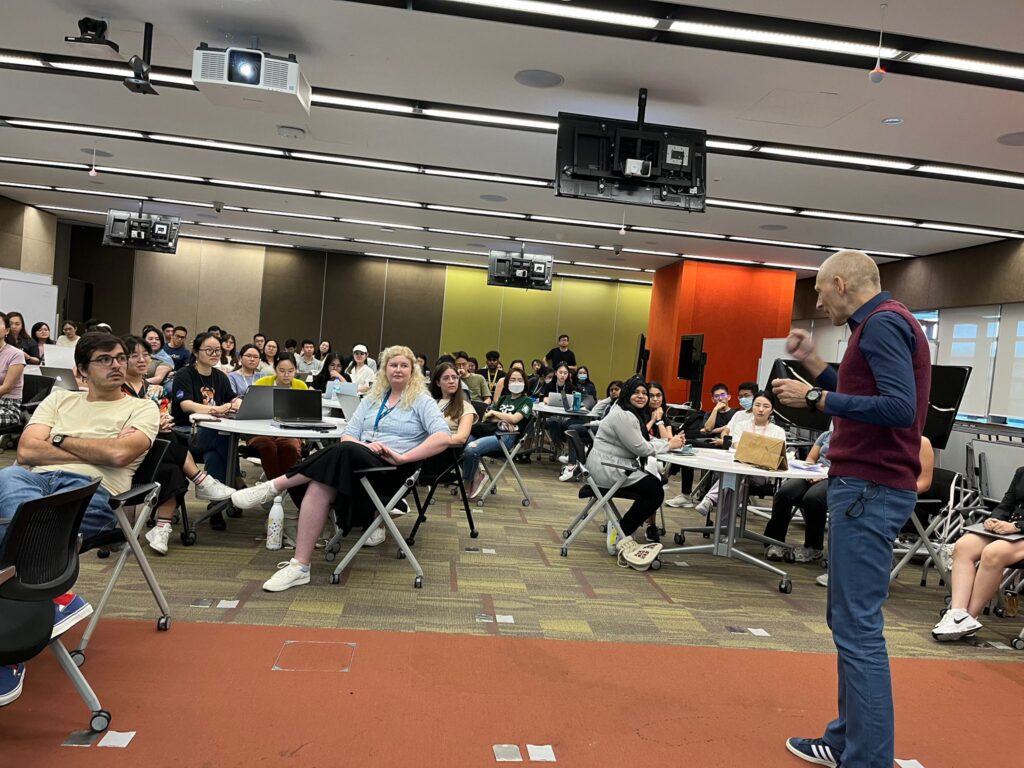
PhD Qualifying Exam workshop
This week I gave a presentation at a postgraduate student workshop about the PhD qualifying examination. This event was organized by the School of Medicine Postgraduate Committee and my task was to give a talk about delivering an oral presentation as part of the PhD qualifying exam. I felt happy to once again be asked by the students to help with their workshop.
Based on the feedback and my own perception, my talk went quite well. As usual, my presentation style was far from perfect. But in the end I feel that what matters most is to get the audience to listen and be engaged and to deliver content that is actually helpful and meaningful. What helped greatly is that over the years through my teaching, I have thought a lot about this topic. As a result, I was able to share my own insights and opinions, as opposed to present some knowledge that students could easily look up online.
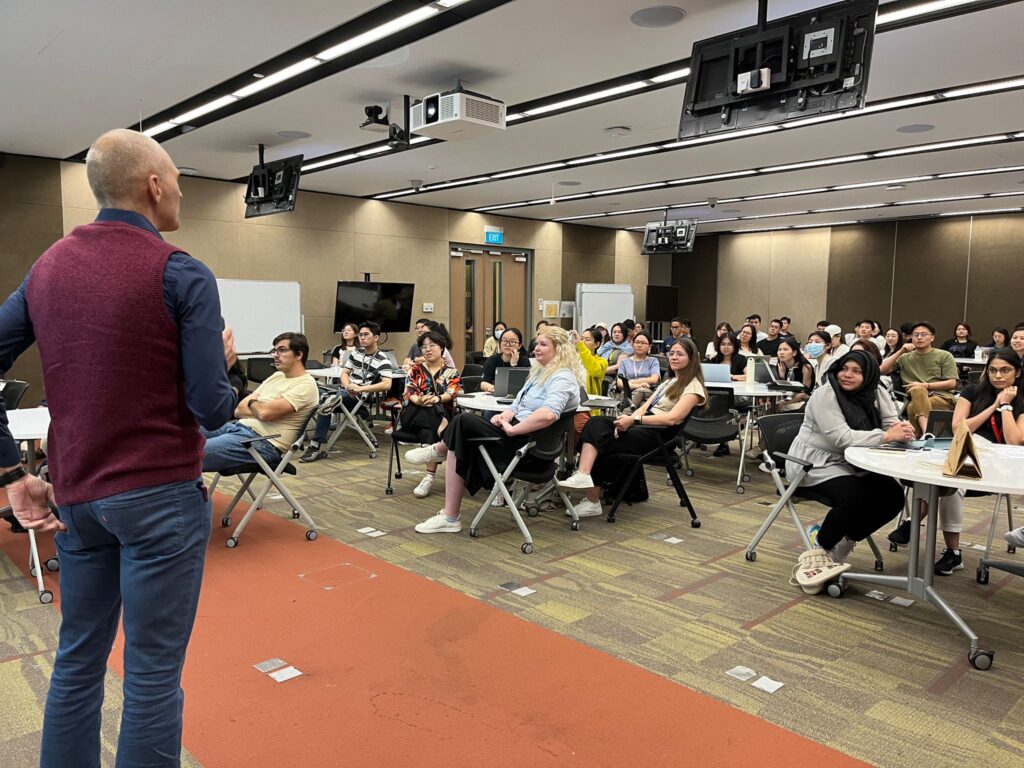
HIGHLIGHTS FOR WEEK OF 11 – 17 MARCH
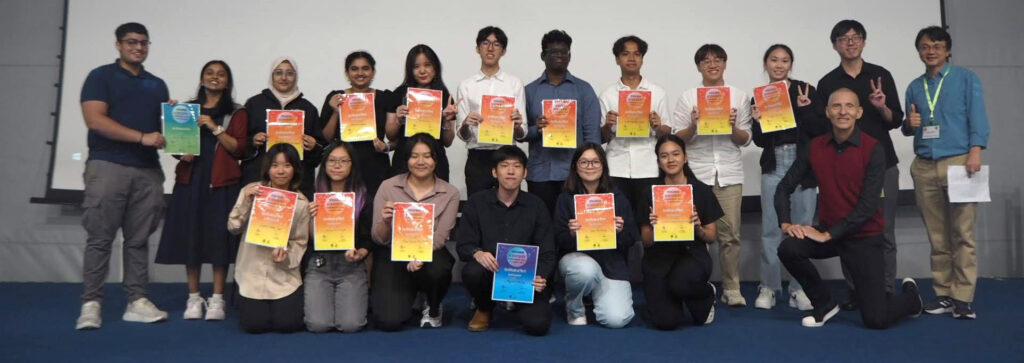

HIGHLIGHTS FOR WEEK OF 11 – 17 MARCH

Young Scientists’ Symposium 2024
This week we again held our annual Young Scientists’ Symposium for Polytechnic Life Science students at Science Centre Singapore. As in previous years, I bore again the main load of organizing the event. But it was worth the effort. The symposium was once again very successful, with many students thanking us and commenting at the end of the day that they enjoyed the event and found it meaningful.
Of course, this was only possible thanks to the help of a lot of people, including the members of our organizing committee, our 22 judges as well as various volunteering students or former students dedicating their time to moderate, give career talks or take photos.
Worthy of special notice was my former student Josabella’s presentation, in which she advised the final year Polytechnic students on deciding their future path and gave some insider University study tips. I was totally blown away by her presentation. What she shared was so interesting, meaningful and well presented that I, and I am sure most students, were sitting at the edge of our seats and following each of her points. I never expected that Josabella is such an amazing presenter!
I was also happy about my own talk. It was difficult to come up with good ideas for it, but what helped greatly is that I started early and worked continuously to improve it!
This week has been especially stressful because I had a lot of things on my mind. As a result, I did not have time to do things that I really enjoy, which for me is mainly to spend time on my own outdoors. This has made it difficult to feel truly happy.
Nonetheless, I did not lose my motivation or energy, and the reason is probably that despite all the work, I still had a hobby to look forward to every day.
My biggest hobby (and to some degree obsession) ever since I was 14 has been music, in particular records. I remember how I first started to go to record stores after school when I was in High School. Even though back in East Germany only records approved by our government and pressed locally were available, entering the records stores always had a magical feeling for me.

My biggest hobby (and to some degree obsession) ever since I was 14 has been music, in particular records. I remember how I first started to go to record stores after school when I was in High School. Even though back in East Germany only records approved by our government and pressed locally were available, entering the records stores always had a magical feeling for me.

As far as I remember, this was the first record I ever bought on my own when I was 14.
Since then, I have visited many record shops in many countries, and the amazing thing is that I remember (almost) all of them (even though my memory for most other things is usually rather poor). And I still have many old records to remind me of these visits.
More recently I have become a huge fan of LP replica cd’s. There are a number of things that fascinate me about them. They make me feel like having a vinyl record to look at, while they are much easier to store and to listen to. I somehow also like the fact that they are a small version of the real thing, which allows me to somehow see the beauty of these records in a different light.
More recently I have become a huge fan of LP replica cd’s. There are a number of things that fascinate me about them. They make me feel like having a vinyl record to look at, while they are much easier to store and to listen to. I somehow also like the fact that they are a small version of the real thing, which allows me to somehow see the beauty of these records in a different light.
On the other hand, why we feel excited about certain things is often hard to explain logically. We just like certain things, which probably has a lot to do with past experiences and memories and with associations that these things bring up. But I do know that for me, there is nothing like holding a physical record (or replica cd) in my hand and play it.
Music is something that makes me feel excited every single day. I remember my time serving in the army back in East Germany when what I disliked most was to have nothing to look forward on a day. Every day was like the previous one: wake up early, go for morning exercise, attend some classes, do various exercises, eat and go back to our room to spend the night with 10 other guys and finally sleep.
I believe that we need something every day that we enjoy doing, even if it is for a short time. In the army, there was no opportunity for that.
I feel that if we have a lifelong hobby that we feel passionate about we are very fortunate. While it is often difficult to understand why people are so passionate about specific things, there is no better way to connect with others than realizing that we share our hobby.
I feel that if we have a lifelong hobby that we feel passionate about we are very fortunate. While it is often difficult to understand why people are so passionate about specific things, there is no better way to connect with others than realizing that we share our hobby.
One of the few pictures I have from back in my army days, when life was not very exciting.
HIGHLIGHTS FOR WEEK OF 26 FEBRUARY – 3 MARCH
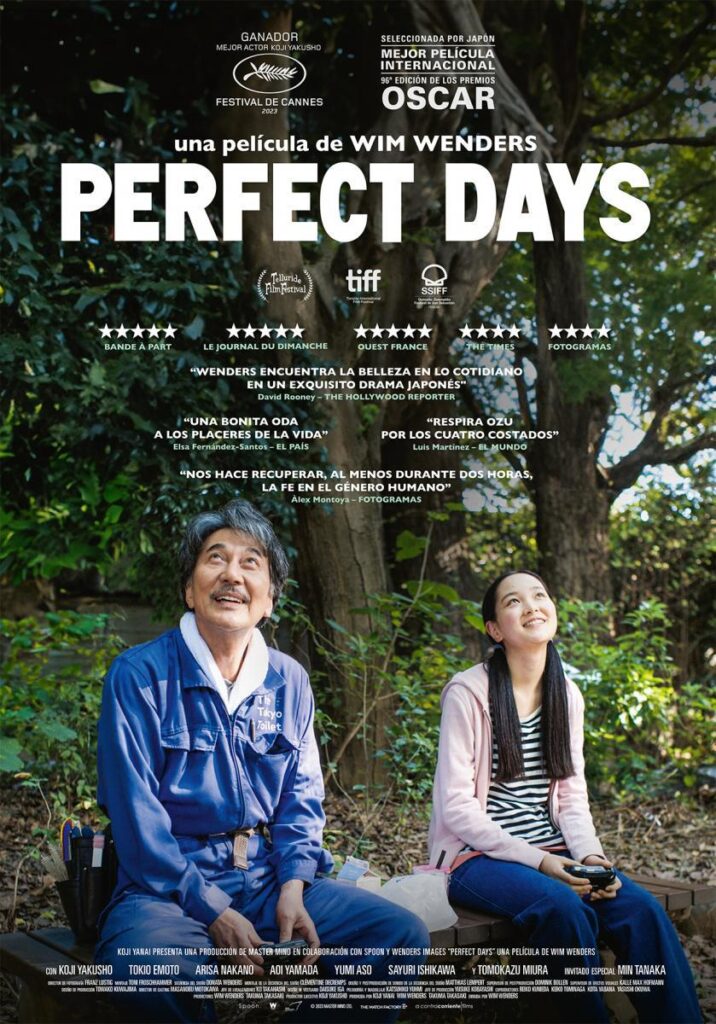

HIGHLIGHTS FOR WEEK OF 26 FEBRUARY – 3 MARCH


Wim Wenders movies
This month the Projector cinema had a special Wim Wenders showcase and I realized that I really enjoy his movies.
I watched Wim Wenders’s new movie, “Perfect Days”, which dealt with two important questions: What are perfect days like? And how do we deal with unexpected things?
During the first hour of the movie nothing really happened and we were merely shown the everyday routine of Hirayama, the main hero of the movie. His daily routine consisted of very simple things, his work as a toilet cleaner, listening to music, reading, and taking care of his plants. Yet, I enjoyed this hour because while watching Hirayama I was able to explore my own daily routine and reflect on my idea of perfect days in my own life.
Watching Hirayama’s life and reflecting on it strengthened my belief that a simple life is a beautiful life. And the less we have, in terms of possessions and distractions, the easier it is to achieve.
However, during the second part of the movie, Hirayama’s daily routine became interrupted. He experienced a number of adversaries that had the potential to throw him out of balance. But amazingly, he managed to not treat them as adversaries, but to accept them as part of life and in a way to make them a part of his daily routine. I must say that I felt very inspired by this.
I already wrote about “Paris, Texas”, which I re-watched on a big screen this week. Knowing the movie and in particular knowing the ending helped me to recognize the significance of some scenes. For instance, there was one scene when Travis, the main character of the movie, talked about his mother being an ordinary woman and his dad trying to turn her into someone she was not. Trying to turn someone else into the person we want them to be is probably the cause of many conflicts. And it was precisely what broke Travis’ relationship with his wife.
Finally there was “Alice in the cities”, a movie from the 1970s playing (mostly) in Germany, which made it even more relatable. It was the story of a newspaper journalist, played by Rüdiger Vogler, who went to America to write a story about the country. Upon returning to Germany, he unexpectedly had to take care of a girl. The girl and taking care of someone taught him some important lessons.
In the first part of the movie, while still in New York City and preparing for his departure back to Germany, he visited an old girlfriend. He tells her how he hated the small town America that unfolded once he drove out of New York City. Every town looked the same and one hotel was just like the others. Above all, he hated the television, which dominates life in small town America, with its horrible advertisements and a programme that never questions anything. He felt that the television programme was in itself an advertisement for the dull life people are living.
His friend replied in a very profound way. She told him that if we are going to places with the expectation that they will reveal what we expect and make us feel good about ourselves, we are bound to experience disappointment. We have to learn to like ourselves first, before we can embrace a different culture with its charms and flaws.
She tells him that how we perceive our environment and live our lives is our own decision. She says: “If you come to an intersection in New York City it is like coming to a clearing in a forest”, and ends with the words “I can’t help you. I don’t know how to live either. Nobody ever showed me how.”
She tells him that how we perceive our environment and live our lives is our own decision. She says: “If you come to an intersection in New York City it is like coming to a clearing in a forest”, and ends with the words “I can’t help you. I don’t know how to live either. Nobody ever showed me how.”
For the rest of the movie, while spending time with the little girl traveling to Germany, it was ironically the little girl who showed him how to live, how to accept things the way they are and enjoy them and how to love himself. I loved the very symbolic scene where the girl takes a picture of the journalist so that he would actually get to know and love himself.
I look forward to discovering more Wim Wenders movies!
I look forward to discovering more Wim Wenders movies!
HIGHLIGHTS FOR WEEK OF 19 – 25 FEBRUARY
My main goal this semester is to make learning more fun, mainly by making classes more focused on student participation. How have I succeeded in this? To keep track, I have kept some e-diary in which I reflected about the various classes.
Lecture 1
The first lecture is always difficult. While I usually look forward to teaching classes, I do not look forward to the first lecture. In fact, I often feel somewhat scared.
It is well known that students to a large extent make up their mind about a lecturer during the first lecture, or even during the first few minutes of the first lecture. Hence, I tend to be stressed because I feel I need to prove my expertise and ability to teach.
What makes the first lecture also difficult is that there is little I can refer to. Naturally, it would be ideal to start with a student activity, as opposed to starting to lecture. However, interesting (which usually implies challenging) activities are based on applying prior-learned concepts. But in the first lecture there aren’t any.
In addition, although my main focus is on interpreting research data and applying learned concepts to research problems, I feel reluctant to overwhelm students at the start of the first lecture by throwing some research figures at them immediately.
In past years, I often started the first lecture with some humorous reflections about previous semesters, often discussing student feedback comments. I no longer do that because I feel that it is a waste of valuable lecture time. Instead, I try to provide more meaningful messages later throughout the semester.
Hence, at the beginning of my first class I ended up discussing some actual cell biology content. Although I did this in an interactive manner, there were several shortcomings.
Firstly, the discussed topic (transmembrane transport and membrane permeability) must have felt somewhat random to students. Discussing problems in a somewhat random fashion and letting students make their own connection is part of my general teaching approach, because it mimics the real life situation students will encounter. It also resembles the natural way through which children learn. But at the beginning of the semester the students are not used to this and probably feel confused.
Secondly, when I teach about cell biology related content, there is always the chance that students ask questions about things that I do not know. These things tend to not be very important, as students are merely asking for more knowledge that could be easily looked up.
I indeed received these types of questions, and some I could not answer. More importantly, I started the semester by sending a message that I wanted to avoid, that detailed knowledge is important. What I really want students to learn is to figure out detailed knowledge on their own, and not delegate this task to me by asking me to explain.
Hence, next time around I will do things differently during the first lecture and use an approach that I apply frequently throughout the semester – let students do what I call a “self-learn quiz” about membrane permeability and immunofluorescence. Here, students are supposed to work in groups where they are given problems that they need to solve. Immediately afterwards they are provided with the relevant explanations. The advantage of this approach is that students first try to figure out the problem by themselves. As a result, they are more interested in finding out where they may have gone wrong and are likely to remember a concept better. In addition, in this way the first lecture sends a much better message about the course to the students.
Lecture 2
In “lecture” 2 there was literally no lecturing. We spent most of the class time to discuss problems and this went really well. The students were engaged, paid attention and I managed to explain clearly. I relied much on an approach that I have not used much in the past, letting students discuss problems first with their neighbours before discussing the topic in class. In the past, I usually posed questions and tried to solicit answers immediately. Although this approach takes less time, it is usually the same students who call out suggestions. By letting students work in groups first, all students get to express their thoughts (to their neighbours) and the students spend more time thinking about a problem.
Lecture 3
In preparation for this lecture I spent a lot of time to assign the student groups for our team activities. The assignment of students to groups is based on their introduction video. I try to match students based on their personality and apparent enthusiasm as well as a diverse academic background and performance.
Our first group activity was a team-based quiz, which was supposed to be graded, although only with a low percentage. However, I messed up administering the quiz and hence was unable to count the quiz as a graded assignment.
Nonetheless, the students were still able to do the quiz. In the end, it worked out fine because the quiz provided a good chance for students to practice without feeling any pressure. The only downside is that I now need to come up with one additional quiz.
The first part of the lecture consisted of in-class teaching and went exceptionally well. There were quite a few activities and I was very happy to see that the students participated actively. I hence believe that in this lecture I did achieve my goal of making learning and attending lectures fun for students.
Lecture 4
In this lecture we did mostly exercises and little “lecturing”. Surprisingly, the students enjoyed this very much and it turned out to be my best class so far in this semester. It confirms my belief that the best way to engage students is to let them solve challenging problems.
In fact, it reminds me of my math classes in school, where one of my teachers used to give more challenging problems to the students who finished early. Because of these challenges, the classes were fun and I actually remember them.
One incredible thing that has happened this semester (and is different from past semesters) is that the students participate very actively. They are very willing to speak out loud during class and suggest answers, or even ask questions. I am not really sure what the reason is, but perhaps it has to do with including more group discussions, leading students to adopt a more interactive mindset.
In the subsequent two lectures I incorporated the use of ChatBots to solve research related problems. This was an illuminating experience that I plan to write about separately.
A few weeks into the semester I also realized that despite trying to make learning more fun, the lecture attendance is relatively low on days where we do not have compulsory group activities. Many students choose to watch the online recording of the classes, even though I emphasized on several occasions that by only watching recordings, the students miss out on important practice opportunities.
But in the end it is most important to focus on the students who do come and make it fun for them. In addition, it may also be a reflection of how students make choices, which is often not based on whether learning is fun. Instead, many students focus on what are the best ways to succeed and consider which approach is likely the most efficient and perhaps convenient. And there may also be students who decide that other things are more important to them. In fact, I used to be one of those students in University, as doing my research projects usually had the priority over attending classes.
HIGHLIGHTS FOR WEEK OF 12 – 18 FEBRUARY

This week we finally had our uncoupler paper accepted in Scientific Reports. This project started out as part of Mei Ying’s PhD project and was 11 years in the making, including many collaborators!
HIGHLIGHTS FOR WEEK OF 5 – 11 FEBRUARY

Watching Abang Adik last week inspired me to make a short day trip to Mersing in Malaysia. One main reason was that I really enjoy bus rides. Another was that I was ready for a change of my daily routine.
HIGHLIGHTS FOR WEEK OF 12 – 18 FEBRUARY

This week we finally had our uncoupler paper accepted in Scientific Reports. This project started out as part of Mei Ying’s PhD project and was 11 years in the making, including many collaborators!
HIGHLIGHTS FOR WEEK OF 5 – 11 FEBRUARY

Watching Abang Adik last week inspired me to make a short day trip to Mersing in Malaysia. One main reason was that I really enjoy bus rides. Another was that I was ready for a change of my daily routine.
After my recent trip to Kuala Lumpur I was reminded that most of Malaysia is very different from its capital. In Mersing life seems to have stood still. Life also seems to be much slower, and virtually nobody seems to walk.

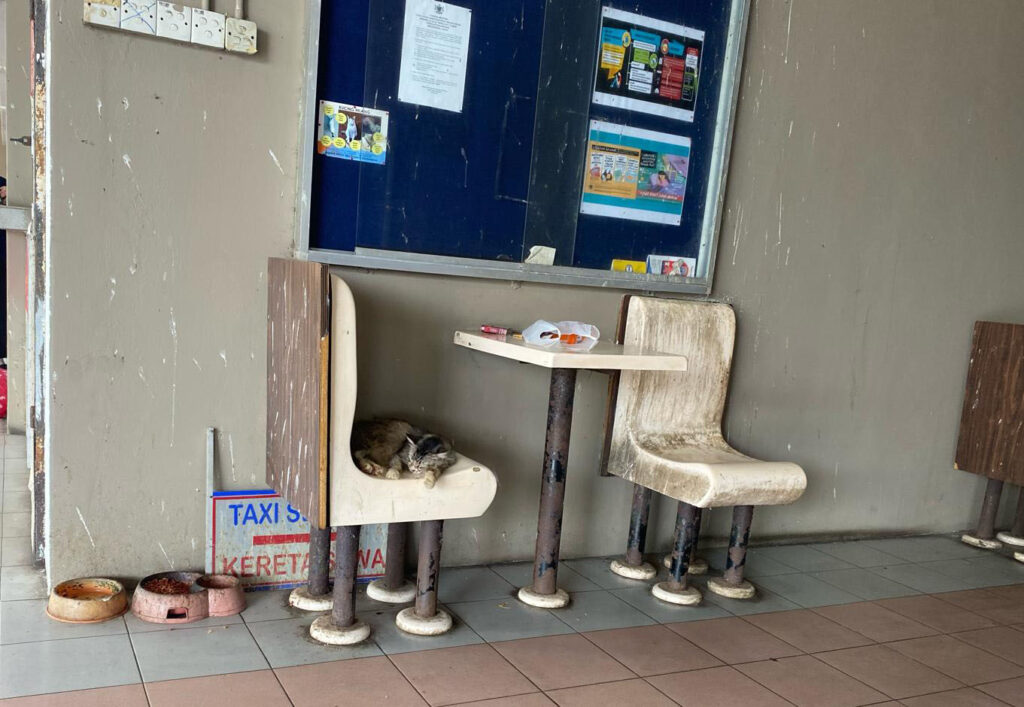


HIGHLIGHTS FOR WEEK OF 29 JANUARY – 4 FEBRUARY


Abang Adik and Paris, Texas
This week I watched a new movie from Malaysia, Abang Adik, the story of two Malaysian brothers without an identity card. It was a movie about the life and struggle of undocumented Malaysians and about the stress they experience on a daily basis. It was also a movie about the importance of love and caring, and what difference it can make especially under conditions of adversity.
Lack of legal identity is a major problem in Malaysia. According to the New Naratif website, in Sabah, the state in Malaysia with the highest stateless population, one out of every three people is undocumented. This corresponds to about one million people.
Lack of legal identity is a major problem in Malaysia. According to the New Naratif website, in Sabah, the state in Malaysia with the highest stateless population, one out of every three people is undocumented. This corresponds to about one million people.
The legal identity problem is also passed on to children. Thus, children of undocumented people in Malaysia are often unable to obtain birth certificates. As described by the malaysiakini website, this makes life for these children like living in an “invisible jail”. Not only are they unable to travel outside the country, but much more importantly they lack access to education and medical treatment, and as they grow up are subject to exploitation by their employers.
These children are trapped in this situation due to no fault of their own, merely because they were born to parents who immigrated or who had no proof of being Malaysian citizens.
These children are trapped in this situation due to no fault of their own, merely because they were born to parents who immigrated or who had no proof of being Malaysian citizens.
In the movie Abang Adik we first were shown what life is like for the two brothers, how the lack of identity cards forced them to do work that was hard and earned them only a low pay and how it made them vulnerable to be exploited and cheated. The movie showed how they lived in constant fear of being caught in police raids and being detained. It made me realize how easy it is to take our rights as citizens or residents for granted, and how difficult it is to imagine what life is like for people who lack these rights.
One of the two main characters, Adik, then becomes involved in a murder. In a somewhat unlikely turn his older brother Abang takes the blame for the murder and eventually sacrifices his own life to give Adik a future. In the most moving scene of the movie, Abang explains to a monk how difficult and unworthy living his life is. He explains that not only is he living in constant fear, but that there is no future for him. As such, he would rather want to die.
The theme of personal sacrifice was also brought up in another movie I watched this week, “Paris, Texas”, a famous road movie from 1984, directed by Wim Wenders. Here the hero of the movie, Travis Henderson, saved his former wife from a life without a meaning and future by letting his son, whom he loved, be with her. He did what he thought was the best for his son and his wife, and by doing so he gave up the most important thing in his own life.
These examples are extreme. Nonetheless, we see similar acts of small self-sacrifice every day on our own lives, where people put the needs of others before their own. My parents worrying about my health more than their own, and making many sacrifices throughout their lives so that I can have a secure future. There are also many people who volunteer to help others who do not have the means to help themselves.
What makes us value the life and success of others so much, sometimes more than our own? One reason that my sister has pointed out to me once is because we want others to experience what we have experienced. Another is likely that we realize, consciously or unconsciously, that we are here because of all the help that we received, and we are simply passing what we have received on to others.
Because I really enjoyed “Paris, Texas”, I have booked a ticket to see it again next week on a big screen!

Should infants have screen time?
Last year, a local study on screen time for infants by researchers from the Department of Paediatrics at the NUS Medical School and the A*STAR Singapore Institute for Clinical Sciences grabbed quite a bit of media attention. The research is part of the GUSTO (“Growing Up in Singapore towards Healthy Outcomes”) cohort study and found that excessive screen time for infants is linked to an impaired development of cognitive functions that is still apparent in children at a later age.
In particular, the study found that excessive infant screen time is associated with a deficiency in executive functions. These refer to a category of cognition including working memory, cognitive flexibility, inhibitory control, planning, problem-solving and sustained attention.
It is obvious why this study is relevant: screen time for infants has been on the rise. For instance, a study from 2019 compared screen time of American Children between 1997 and 2014. Screen time included watching television or using other video devices, electronic video games and computer–related activities, and in 2014 additionally time spent on mobile devices and children’s learning devices. The total screen time of 0 to 2 year old infants rose from 1.32 hours per day to 3.05 hours per day.
Notably, the increase of time spent watching television was even more dramatic. In 1997, infants spent on average 0.56 hours per day watching TV, in 2014 it was 2.62 hours per day.
The time spent on mobile devices in 2014 amounted to only 0.37 hours. This proportion is likely much higher in 2023.
When looking specifically at 6-month-old infants, another study from the US (Tomopoulos et al., 2011) found that of 259 infants, 249 (96.1%) were exposed to media at 6 months of age, watching media on average 2.5 hours per day. Increased media exposure at 6 months was associated with lower cognitive development at the age of 14 months.
The study by Tomopoulos looked specifically at infants with mothers with low socioeconomic status, which is known to be associated with increased screen time in children. When looking at a mixed population and their infants, Wiltshire et al. (2021) found that only half of the infants were exposed to screens at 6 months. Among the children who did view screens, the average daily exposure time was 3 hours and 70% had a screen in the room where they slept.
Media usage time in infants is likely not much lower in Singapore. For instance, a study by Aishworiya et al. (2019) found that in 2010 the average amount of television viewing at 12 months was 2.0 hours per day. In 2010 television was the main media available to infants. This makes me wonder what current exposure times are like when portable screen devices like mobile phones and tablets are literally available anywhere anytime. They also seem to be used a lot of the time, especially at times when parents used to interact with their children, such as during meals.
This then raises the question whether excessive screen time for infants is detrimental and if so why. Indeed, the American Academy of Pediatrics discourages any screen media use before age 18 months except for video chatting.
What then is so bad about excessive screen time for infants? The main problem is likely that it deprives infants from other essential interactions. Watching a 2D screen stimulates sensory cognitive pathways in the brain. However, what infants need for the development of executive functions is stimulation of the prefrontal part of the brain, which depends on interactions of infants with their environment.
There is indeed evidence from a number of studies suggesting that early severe deprivation of close contact with parents specifically within the first 6 months of an infant’s life has long lasting detrimental effects for executive functions in later life. However, prior to the NUS study evidence for this has primarily been obtained from child adoption studies.
For instance, one study from 2017 reported that children who were adopted before six months of age were indistinguishable from their peers upon reaching adulthood in terms of their executive functioning. In contrast, children who were adopted later than six months showed some degree of disinhibited social engagement, inattention and overactivity as adults.
However, this and most other such retrospective adoption studies likely involve some selection bias, whereby children who develop faster and who may end up with a higher level of executive functions are more likely to become adopted.
Notably, there has even been one randomised control trial, the so-called Bucharest Early Intervention Project. In this study, researchers randomly allocated children to two groups, infants who stayed at the orphanage and infants who were placed into foster care at an average age 22 months. In addition, the study included a control group with children who had never lived in institutions.
When various cognitive functions (such as different types of memory, attention set shifting, rule learning and error monitoring) were examined at the age of 12, the researchers found that both adoption and continuous care in orphanages showed similarly lower scores compared to the control group of children who never stayed in an institution. In other words, adoption at a later age has no beneficial effects on the development of executive functions.
When various cognitive functions (such as different types of memory, attention set shifting, rule learning and error monitoring) were examined at the age of 12, the researchers found that both adoption and continuous care in orphanages showed similarly lower scores compared to the control group of children who never stayed in an institution. In other words, adoption at a later age has no beneficial effects on the development of executive functions.
Taken together, it appears that early adoption and social contact before the age of six months is important for the development of executive functions. How can the importance of the early development in acquiring executive functions later in life be explained scientifically?
Recent research suggests that during early infant development an extensive reorganization occurs within the prefrontal cortex area of our brain. This reorganization is necessary for children’s capacity to develop executive functioning. Factors during the first few months of life such as parent-child interactions and cognitive stimulation are likely important to promote this structural reorganization of our brain.
Recent research suggests that during early infant development an extensive reorganization occurs within the prefrontal cortex area of our brain. This reorganization is necessary for children’s capacity to develop executive functioning. Factors during the first few months of life such as parent-child interactions and cognitive stimulation are likely important to promote this structural reorganization of our brain.
Interestingly, prefrontal cortex reorganization also leads to a specialization in various discrimination functions, such as the ability to recognize the expression of emotions, of faces and of language sounds.
For instance, 4- to 6-month-old infants can discriminate phonetic differences that distinguish syllables in both their native and unfamiliar languages. In contrast, when infants reach 10 to 12 months of age, they can only differentiate phonetic variations in their native language. In other words, infants are initially able to distinguish sounds in foreign languages, but lose this ability during their development to become more specialized to distinguish sounds in their own native language.
For instance, 4- to 6-month-old infants can discriminate phonetic differences that distinguish syllables in both their native and unfamiliar languages. In contrast, when infants reach 10 to 12 months of age, they can only differentiate phonetic variations in their native language. In other words, infants are initially able to distinguish sounds in foreign languages, but lose this ability during their development to become more specialized to distinguish sounds in their own native language.
Another interesting example is face recognition. In fact, I can personally relate to this. For instance, during a previous semester I have heard a (non-white) student saying that she finds it difficult to distinguish all the similarly looking white people. I have to admit that this struck me as totally surprising because I have always unconsciously considered white people as very diverse and other ethnic groups as much more similarly looking.
What I experienced is the well-known ‘‘other-race effect’’, where people find it easier to distinguish faces from their own ethnic group. Based on various research studies, what matters most is which faces we are exposed to during early development. Nonetheless, studies have also shown that with training we can improve our ability to differentiate between faces from individuals from other ethnic backgrounds even as adults.
While we remain capable to learn to distinguish faces from other ethnic groups as we grow up, a skill where exposure in later life is not able to compensate for early infancy training is the ability to distinguish between faces from other species.
For instance, a study from 2002 tested the ability to discriminate between different human faces versus different monkey faces by infants who were 6 months or 9 months old and by adults. Only the 6 month old infants were able to identify specific different human and different monkey faces equally well. 9 months old infants as well as adults showed a markedly better ability to discriminate between human faces compared to the monkey faces.
I found this study very intriguing and hence I looked further into this research paper to find out how the authors studied face recognition. The researchers took advantage of a phenomenon that is probably well-known to everyone: If there is someone new among a crowd of familiar faces, we tend to focus on the new person. Hence, the researchers did something similar and exposed infants and adults simultaneously to a familiar (previously viewed) and a novel face. Longer duration of looking to the novel face stimulus indicated discrimination and recognition memory.
Specifically, the researchers carried out these recognition tests for a duration of 5 seconds for adults and 10 seconds for infants. During these time periods, they monitored the eye movements of the adults or infants using a camera device. They used colored pictures (see figure) of human Caucasian and monkey faces (using the Crab-eating or long-tailed macaque – Macaca fascicularis, which is the macaque species commonly found in Singapore).

What did the results show?
Adults looked at novel human faces on average for 2.79s compared to spending only 1.63s looking at familiar faces. In contrast, the time spent looking at novel monkey faces (2.42s) was not significantly different compared to familiar faces (2.31s).
The same trend was observed in 9 month old infants, who spent more time looking at novel compared to familiar human (4.50s versus 3.63s) but not monkey (3.86s versus 3.74s) faces.
In contrast, 6 months old infants looked longer at both unfamiliar human (4.55s versus 3.57s) and monkey (4.04s versus 2.31s) faces, indicating that they can likely recognize monkey faces as well as human faces.
What is more, in a subsequent study (Pascalis 2005), the researchers showed that 9 months old infants who were previously trained to recognize monkey faces when they were 6 months old could still recognize monkey faces, whereas control infants who did not have prior training could not.
The research suggests that there is a window early in infancy during which humans can learn to recognize faces from other species, and potentially develop executive functions. When this window is missed, developing these skills becomes difficult or impossible.
The recent study by Law et al. (2023) looks at whether screen time usage at 12 months of age contributes to attention levels and executive functions at a later age of 9 years. Based on the studies discussed above, 12 months old infants may have passed the critical period for the development of executive functions. However, it appears likely that there would be a good correlation between screen exposure at 12 months and at 6 months. Hence, screen time usage at 12 month is probably also a good proxy for that at an earlier age.
The authors studied 506 mother-child pairs, which are part of the GrowingUp in Singapore Toward Healthy Outcomes (GUSTO) prospective cohort study. GUSTO aims to understand how early life influences affect long term health.
To determine the effect of exposure to screen time during early life on executive functions in childhood, the researchers used a number of measures. These include a Developmental Neuropsychological Assessment (so-called NEPSY-II), which incorporated the three core executive function components, inhibitory control (e.g. the ability to suppress previously learned behaviors and adapt to new conditions), cognitive flexibility (e.g. shifting of attention), and the working memory. The study also utilized scores on an attention deficit scale and on a General Executive Control Problems scale provided by the teachers.
To measure the correlation between screen time at 1 year of age and executive functions at 9 years, the researchers determined t-scores. This involves conducting a regression analysis between the dependable variable Y (e.g. attention problems as a representative executive function in Table 2 below) and the independent variable X (infant screen time). In a regression analysis, we calculate a factor b, the regression factor of the independent variable X. The regression factor b corresponds to the slope of the regression line between independent variable Y and dependent variable X.
The regression equation is expressed as:
Y = a + bX
where Y is the dependent and X the independent variable,
b the slope of the regression line, and
a the vale of Y when X=0 (in other words the Y-intercept of the regression line)
To determine whether the correlation between an executive function and child screen time is significant, t-scores are calculated. The t-score is calculated by dividing the value of b by its standard error (s.e.b.). Generally, any t-value greater than +2 or less than -2 can be considered significant.
The standard error of b is naturally dependent how close the individual data points are to the regression line between the dependent variable Y and the independent variable X. Thus, even if the slope of the regression line (regression factor b) is high, if the data spread is wide the t-score will be low. On the other hand, despite a low value of b a t-score can be high if all data points fit well close to the regression line.
A deficit in executive function development is known to be correlated with altered brain electrical activity, specifically with the appearance of slow theta waves. Hence, the researchers also performed electroencephalography (EEG) measurements at the age of 18 months. Notably, greater screen time exposure was found to be associated with altered EEG patterns that showed an increased amount of theta waves.
Finally, the authors wanted to determine whether the observed EEG changes were involved in the paths form infancy screen usage to executive functioning. To accomplish this, the researchers performed a so-called Mediation analysis, a statistical method that helps to assess “how a third variable affects the relation between two other variables”.
The results showed that “frontocentral and parietal theta/beta ratios partially mediated the path from screen time at age 12 months to the latent executive function outcome at age 9 years”.
The results showed that “frontocentral and parietal theta/beta ratios partially mediated the path from screen time at age 12 months to the latent executive function outcome at age 9 years”.
As a cautionary note, the authors point out that the identified correlations do not necessarily prove causation. Moreover, the effect sizes of infant screen exposure on executive functions in later life may be relatively small. However, it is important to remember that given the competitive nature of educational and work environments, even small differences in executive functions can have a big influence on outcomes for individuals. By adding up many small differences in individuals, there could also be great implications for the society.
In conclusion, letting children get exposed to a large amount of child screen time does have effects on their later development, although it may not mean the end of our society as we know it. Nonetheless, with less screen time it may be a more pleasant society to live in.
HIGHLIGHTS FOR WEEK OF 15 – 21 JANUARY
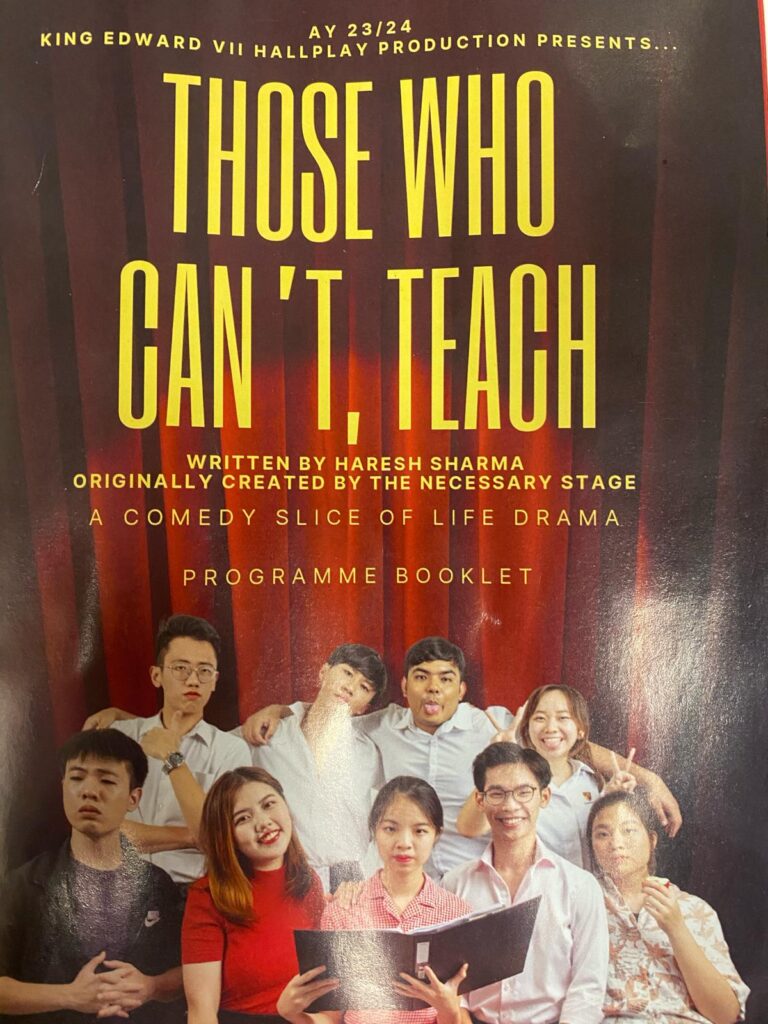
“Those who can’t, teach”
I watched a new production of “Those who can’t, teach” by the students of NUS King Edward VII Hall, a play about the difficulties encountered by teachers and students in a Singapore public secondary school. The play had some very powerful scenes, due to great acting but also as a result of the very effective use of music. And the play had the effect to make me think, in particular about what it is like to be a schoolteacher in such a challenging environment.
HIGHLIGHTS FOR WEEK OF 15 – 21 JANUARY

“Those who can’t, teach”
I watched a new production of “Those who can’t, teach” by the students of NUS King Edward VII Hall, a play about the difficulties encountered by teachers and students in a Singapore public secondary school. The play had some very powerful scenes, due to great acting but also as a result of the very effective use of music. And the play had the effect to make me think, in particular about what it is like to be a schoolteacher in such a challenging environment.
I personally prefer plays and movies that focus almost exclusively on the meaning, and not on making a drama entertaining and funny. I do know that many theatre and moviegoers want to be entertained. But I find that too much entertainment can hinder true reflection about the highlighted problems and prevent us from taking the issues seriously.
Nonetheless, the play did make me think, and most importantly about the question of what a teacher can affect? When I look back onto my school years, I realize (with some guilt) that I don’t remember many (any?) instances where my teachers changed me or where they gave me personal advice.
The only teacher whom I remember for really making a difference to me was my primary school teacher. She understood how to make learning fun. I remember her math games, where two students, standing at the back of the classroom, competed in shouting out math answers first. Whoever knew the correct answer first, could advance one step on the parquet floor. Whoever reached the front of the classroom first was the winner. And I remember how in some of her classes literally everyone was swinging their arms to be called upon and be able to speak.
A few years ago I was lucky to witness my sister, a primary school teacher, teaching lessons in her school. I will not forget her math class, because it was an eye-opening experience. It showed me what a great teacher can achieve.
First, there was the excitement of the students. My sister managed to achieve this by playing games and making learning fun. The class started with students (not the teacher!) quizzing one student with math questions. The students were very eager to come up with their own questions and ask them. As a result, everyone participated and everyone learned.
Another great game was to have a group competition between girls versus boys in answering short answer math questions. Compared to individual competitions, group competitions are a very effective strategy to get all students involved. What is more, winning becomes a collective experience, promoting togetherness, whereas losing is not due to individual failure and hence does not affect personal confidence.
Secondly, her class really involved all students. My sister achieved this by ensuring that all students are constantly on the same page with everyone else. This sometimes required to call upon individual students who seemed distracted. My sister was also encouraging towards all students and importantly, she ensured that everyone is challenged at any given point, for instance by giving faster students additional tasks (e.g. explaining problems to slower students).
In short, I felt inspired about how much a teacher can achieve. However, that this is not the rule became very obvious when after the class my sister led me to a closed door of another classroom, from where we could hear the children screaming with apparently nobody paying attention to the teacher. This matches the experience in many of my lessons in school.
Despite being able to recall only few examples where teachers had an impact in my school days, teachers sometimes help students in ways that are not obvious at the time, but that can make a huge difference in the long run, as illustrated in the example of Teck Liang in the play.
Teck Liang did not want to learn and only caused trouble, making the work of his teacher nearly unbearable. Yet, the teacher did not give up on him. She could see through his disruptive conduct and understand how his difficult family background affected his behavior.
That adopting this mindset is difficult is an understatement. Most teachers would give up on highly disruptive students with time, and this is perfectly understandable. Yet, the patience that Teck Liang’s teacher displayed had a lasting impact. It made the difference for him from having no future to being able to lead a life with choices.
Eventually as a grown-up, Teck Liang recognized and acknowledged what his teacher had done for him. But the teacher would have needed some acknowledgement or encouragement at the time of dealing with the difficult student. Instead, the difficulties she encountered added to the personal problems she was experiencing.
This example helped me to recognize what kind of difficulties teachers face. It also made me reflect on how I tend to choose my own attention.
I realized that the focus of my attention in University is exactly the opposite compared to the school setting. I tend to primarily focus on the eager and enthusiastic students, on those who want to learn. In contrast, a very good student in the play (Raymond) pointed out that teachers “only” (or at least disproportionally) focus on the disruptive students. They often have no other choice. On the other hand, in University I do not need to worry about the students who are not motivated because they do not affect the learning of the rest of the class.
Focussing on the enthusiastic and appreciative students in the higher education setting is human nature. But it highlights one great limitation of University education. Students are for the most part left on their own when they face difficulties or lack motivation.
In real life people with difficulties and lack of motivation of course face similar problems. This only further emphasizes the need to help all students as a University lecturer, or better yet to provide them with ways to help themselves.
In the past my approach when supervising unmotivated undergrad students in my lab has been to shift my attention to other students who are more enthusiastic. The better approach would be to help the unmotivated students, to find out what is hindering their success and help them to discover what motivates them.
As a lecturer, I often encourage students who are enthusiastic and do well. But how often do I provide encouraging messages to students who struggle, seem lost and lack commitment? The answer is rarely. It is easy to come up with excuses, like there are just too many students. But in the end, it is about helping one student at a time. I cannot help every student, but that should not stop me from trying to help some students.
My sister Silke now …


As a lecturer, I often encourage students who are enthusiastic and do well. But how often do I provide encouraging messages to students who struggle, seem lost and lack commitment? The answer is rarely. It is easy to come up with excuses, like there are just too many students. But in the end, it is about helping one student at a time. I cannot help every student, but that should not stop me from trying to help some students.
My sister Silke now …


… and then (yes, she is also a PE teacher)
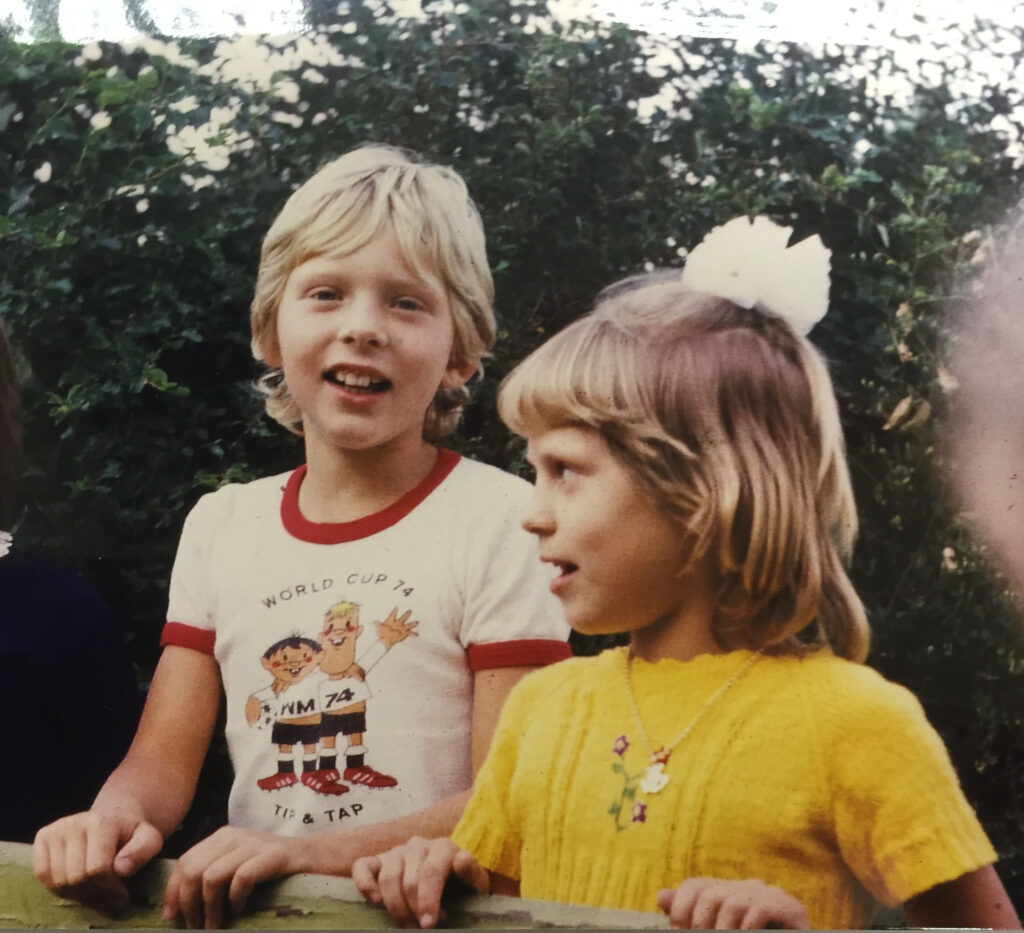
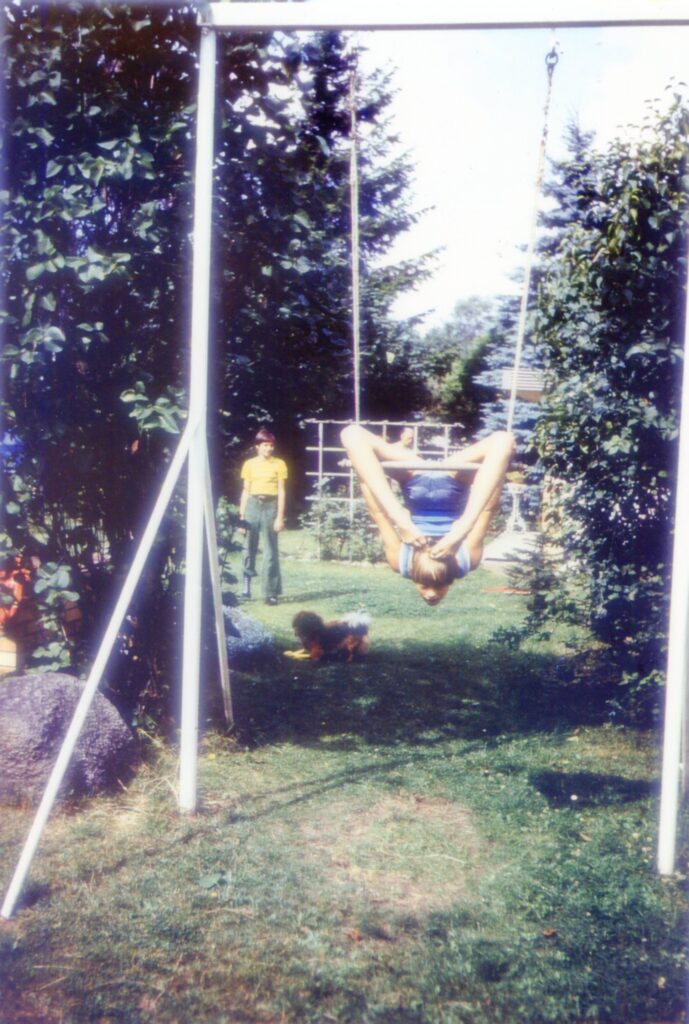
HIGHLIGHTS FOR WEEK OF 8 – 14 JANUARY
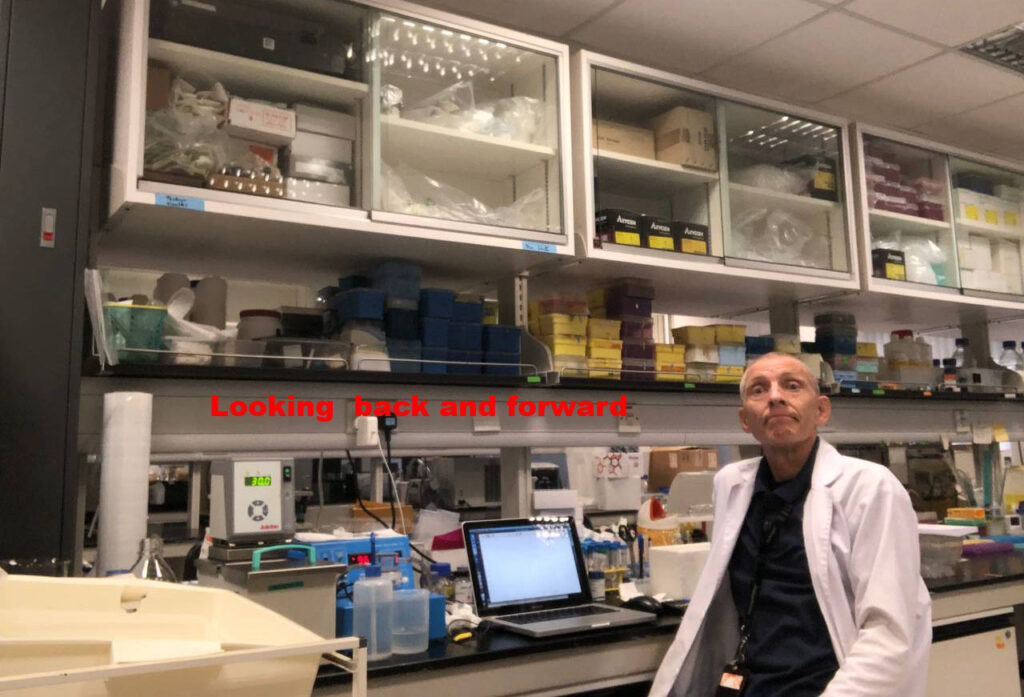
Review of 2023 and Outlook for 2024


HIGHLIGHTS FOR WEEK OF 8 – 14 JANUARY

Review of 2023 and Outlook for 2024
It is high time to look at my past year’s achievements and think about what goals I have for 2024!
When looking at the past year, I realize that I actually have achieved quite a lot. My main work-related goals, creating good student experiences in Cell Biology and in the Young Scientists Symposium, were quite successful. Also, supervising my undergraduates in the lab was fun and yielded good results for them.
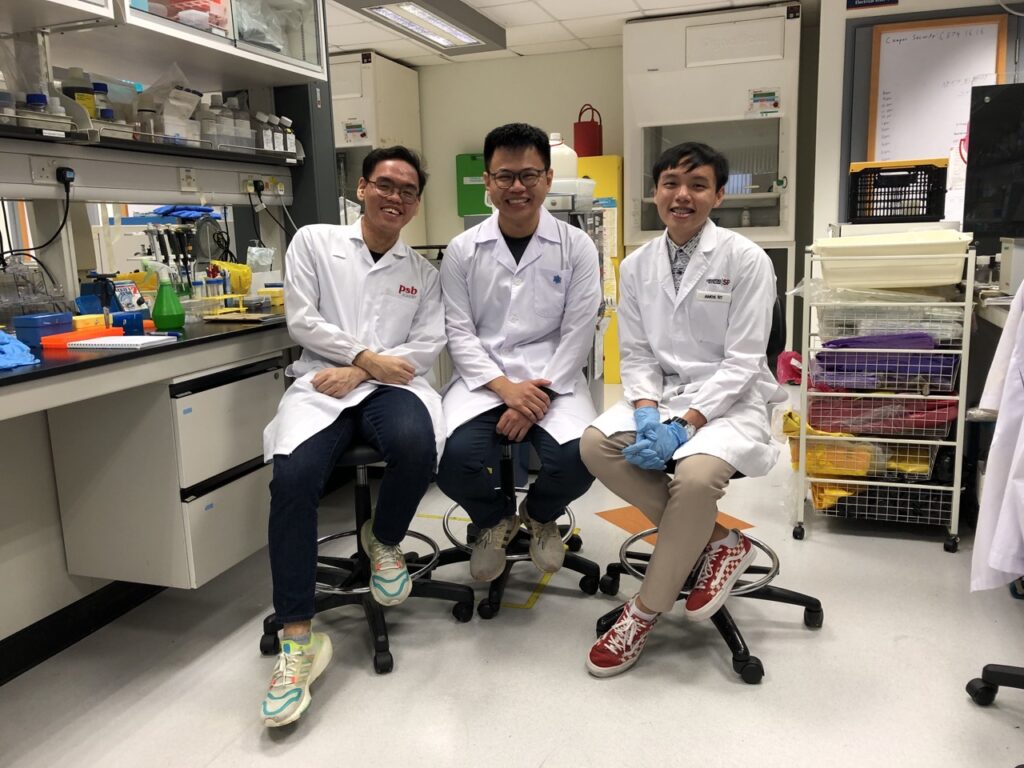 All our UROPS students achieved A- or higher. Well done!
All our UROPS students achieved A- or higher. Well done!
Not everything was successful, though. For instance, there has not been too much progress in our research and even though I put a lot of effort into promoting healthy living in our department, there was little response.
When looking at the past year, I realize that I actually have achieved quite a lot. My main work-related goals, creating good student experiences in Cell Biology and in the Young Scientists Symposium, were quite successful. Also, supervising my undergraduates in the lab was fun and yielded good results for them.
 All our UROPS students achieved A- or higher. Well done!
All our UROPS students achieved A- or higher. Well done!Not everything was successful, though. For instance, there has not been too much progress in our research and even though I put a lot of effort into promoting healthy living in our department, there was little response.
I had some personal achievements in my running that I am quite happy with. I also managed to set priorities and focus on few goals that are really important for me. Thus, I concentrated on just one type of coaching – running coaching, with the result that our training group grew and the quality of the sessions has improved. I also focussed on learning one language and do it as intensely as I can, as well as on making progress with writing my education book.
However, I am most proud of the personal achievements in my life over the past year, getting rid of lots of personal belongings, coming up with solutions for changing my diet that I can actually maintain, succeeding in finding ways to buy less (and think less about buying), and having a better work – off time balance.
Have I become happier as a result of all this? I have certainly achieved a more stable mood with less mental disruptions. However, in order to feel truly happy, we also need to find and do special things that make us feel truly happy, which brings me to my plans for 2024.
In 2023, I have been working on various projects, many of which still have to (hopefully) come to fruition. I have also realized the importance of only focussing on those things that are most important to me right now. Based on this, it then becomes quite obvious what my goals for the coming year are. I want to continue and complete what I have been doing over the past year and succeed in areas that were not so successful over the past year.
Specifically, these goals include becoming fluent in Spanish, finishing my book, creating a great student experience in LSM2233, making progress in my running coaching and building of an NUS running community as well as simplifying my life more.
However, the biggest goal for the coming year is to consciously try to live happily. Specifically, I would like to raise my daily average happiness score from currently slightly above “5” (out of 10) up to “6”. This means going from days where my mood is not super happy, but also not depressed (= a score of “5”) to mostly days where the overriding mood of the day was happy and I felt truly happy at least once (= a score “6”). This sounds rather challenging and it will take some new approaches to achieve this.
HIGHLIGHTS FOR WEEK OF 1 – 7 JANUARY


HIGHLIGHTS FOR WEEK OF 1 – 7 JANUARY


New personal discoveries – The importance of off time
For the past few months I have been contemplating about my daily schedule of tasks that is so demanding that it becomes difficult for me to slot in time to do fun things. As a result, I have been feeling rushed, impatient and stressed. I have also not been able to enjoy doing my daily tasks themselves, but instead I have been trying to finish them as quickly as possible so that I still have time for other things.
What I have tried to do previously is to reduce my daily tasks to those that are really important to me or for doing my job well. However, even after prioritizing my tasks based on these criteria, there were still too many tasks left.
This week I came up with a radical solution and change in my life. From this week onwards, I plan to have two off days each week, Wednesdays and Saturdays. The only goal- or work-related things I can do on my off days are learning Spanish and doing some work for my teaching.
To come up with this potential solution, I considered that my previous approaches to reduce my daily tasks or change my mindset towards approaching them did not really produce the results I wanted. Hence, I came up with what may appear to be a fairly obvious solution. However, although it might seem fairly obvious, I don’t think it is a common thing that people with many tasks or goals do.
How has this approach worked out so far? The off days were good, but not amazing. This may partly be because I have not been feeling too well over the past couple of weeks and because it has been raining on most of my off days. This made it difficult to do the activities that I normally enjoy the most, doing things outdoors.
However, the biggest change I noted was on my ‘work’ days. Knowing that I have off-days scheduled made me feel much more energetic. I also felt less stressed because I did not worry about having to slot in some off time into my day. Instead, I could truly focus on my tasks.
This week I also made a mini-visit to Germany to see my family (including my parents and sister in the picture below), and I realized that being together in person is very different from making video calls!
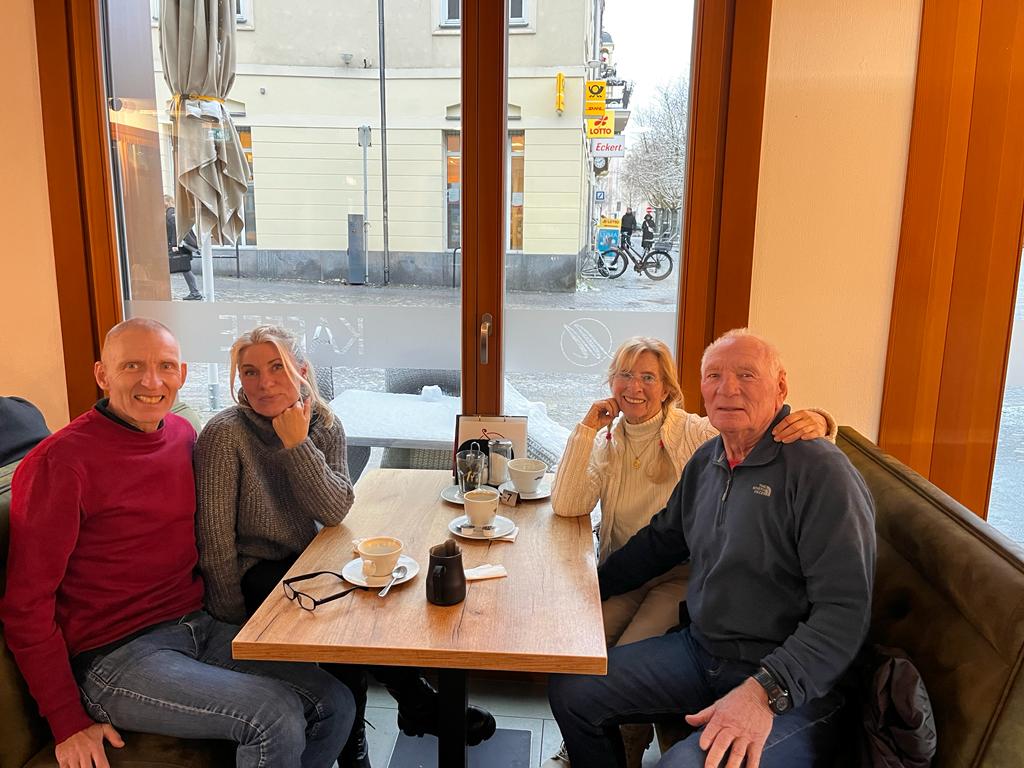
Although my parents home looks nice in the winter, I still prefer to spend time there during the summer!


This week I also made a mini-visit to Germany to see my family (including my parents and sister in the picture below), and I realized that being together in person is very different from making video calls!

Although my parents home looks nice in the winter, I still prefer to spend time there during the summer!




